13 Jet2 Split and Dubrovnik Flights Announced from UK this Summer!
March 2, 2022 - The latest flight news to Croatia as 13 Jet2 Split and Dubrovnik flights have been announced in the 2022 summer flight schedule!
Jet2, the third largest airline in the UK, this year announces 13 scheduled flights to two Croatian airports - Split and Dubrovnik, in the summer flight schedule, reports Croatian Aviation.
Namely, Jet2 announces its return to Croatia with 13 international routes to Dubrovnik Airport and Split Airport, with no plans to operate to Pula Airport.
In the peak summer season, this airline will have up to 30 return flights to Croatia, connecting it with numerous destinations in the UK. Dubrovnik and Split are traditional destinations of this airline, along with many other destinations in Greece and Italy.
Split flights
Birmingham, from 01.05., 2 times a week on Wednesdays and Sundays,
Edinburgh, from 15.05., once a week on Sundays,
Leeds, from 30.04., 2 times a week on Tuesdays and Saturdays,
London, from 01.05., 2 times a week on Thursdays and Sundays,
Manchester, from 30.04., 4 times a week on Tuesdays, Thursdays, Saturdays, and Sundays.
Dubrovnik flights
Belfast, from 30.04., once a week on Saturdays,
Birmingham, from 02.04., 3 times a week on Tuesdays, Thursdays, and Saturdays,
East Midlands, from 01.05., once a week on Sundays,
Edinburgh, from 17.04., 2 times a week on Wednesdays and Sundays,
Leeds, from 03.04., 2 times a week on Thursdays and Sundays,
London, from 31.03., 4 times a week on Tuesdays, Thursdays, Saturdays, and Sundays,
Manchester, from 31.03., 4 times a week on Tuesdays, Thursdays, Saturdays, and Sundays,
Newcastle, from 01.05., once a week on Sundays.
Dubrovnik is traditionally the most common holiday destination for British tourists, so the number of lines is relatively higher than in Split. However, this is a smaller number of operations compared to the record 2019, but the announced program is significantly stronger than the previous 2021 when Jet2 waited until the peak of the summer season for the easing of restrictive measures in the UK to launch flights to Croatia.
Boeing B737-800 aircraft with a capacity of 189 seats have been announced on the routes to Croatia.
For more on flights to Croatia and other travel announcements, make sure to check out our dedicated travel section.
2nd Split Winter Tourism Round Table Held at HGK: 5 Key Takeaways
March 1, 2022 - The second Split winter tourism round table was held on Tuesday, March 1 at the Croatian Chamber of Commerce - Split County Chamber (HGK), with Mayor Ivica Puljak and representatives of the Split and Split-Dalmatia County tourist boards.
After the successful first round table on Split winter tourism in December, the initiative to extend the tourist season received the first concrete vision at today's second meeting. Organized by the Croatian Chamber of Commerce - Split County Chamber and Total Croatia News, the Chamber of Tourism gathered in Split and presented four programs that can strengthen the offer in the postseason and create a base for continuing flights to Split Airport after October.
Mayor Ivica Puljak reiterated his support for this initiative on this occasion as well.
"Split is a city that is increasingly extending the tourist season, and it will continue to be extended because there is great potential for tourism to stretch throughout the whole year. However, we want that tourism to be sustainable, not to endanger the quality of life of citizens. Therefore, it is up to us, the City, to build infrastructure that can enable tourism to develop well," said the mayor, expressing satisfaction with all projects and joint partnership as a good and proper way to develop Split tourism further.
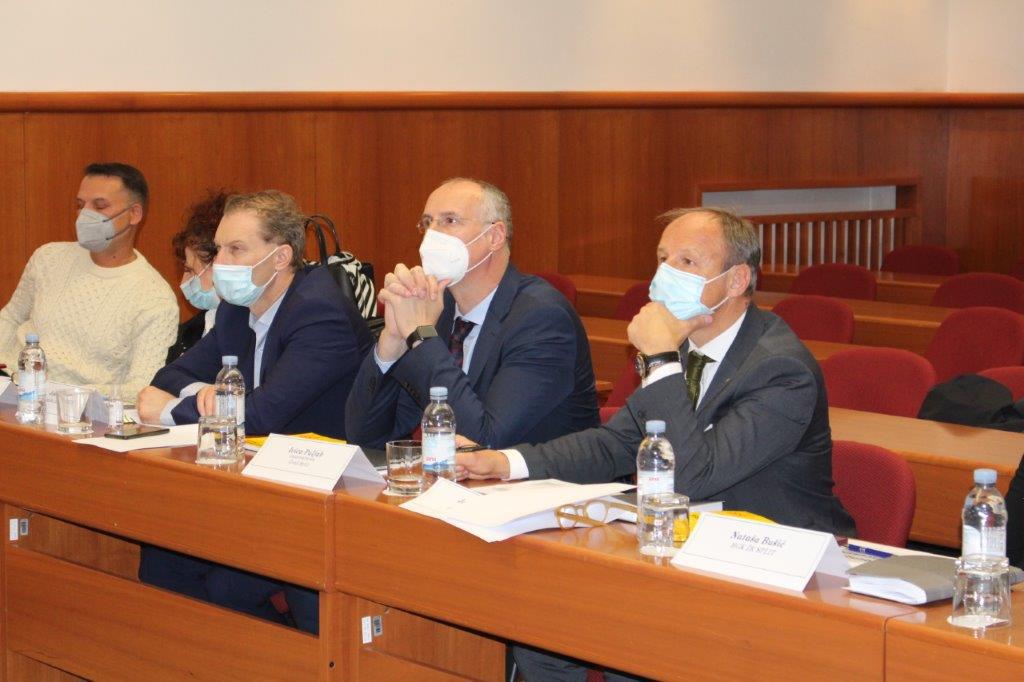
President of the Croatian Chamber of Commerce - Split County Chamber Joze Tomaš also emphasized the potential of developing 365 tourism in Split.
"The trend of introducing a four-day working week, present in a growing number of companies in the world, extends the weekend to three days, which with good connections, airlines and everything else, opens additional opportunities for Split," said Tomaš, emphasizing that we still have a lot of work to do on continuing the current events as well as launching new content.
"The Split Winter Tourism initiative was launched due to the problems that caterers and hoteliers face after the cut that occurs in mid-October. Talking about winter tourism in Split and extending the season, we detected that it is necessary to bridge the period from the end of October to the beginning of Advent, i.e., the month of November, " said Jasmina Kruščić on behalf of the initiative.
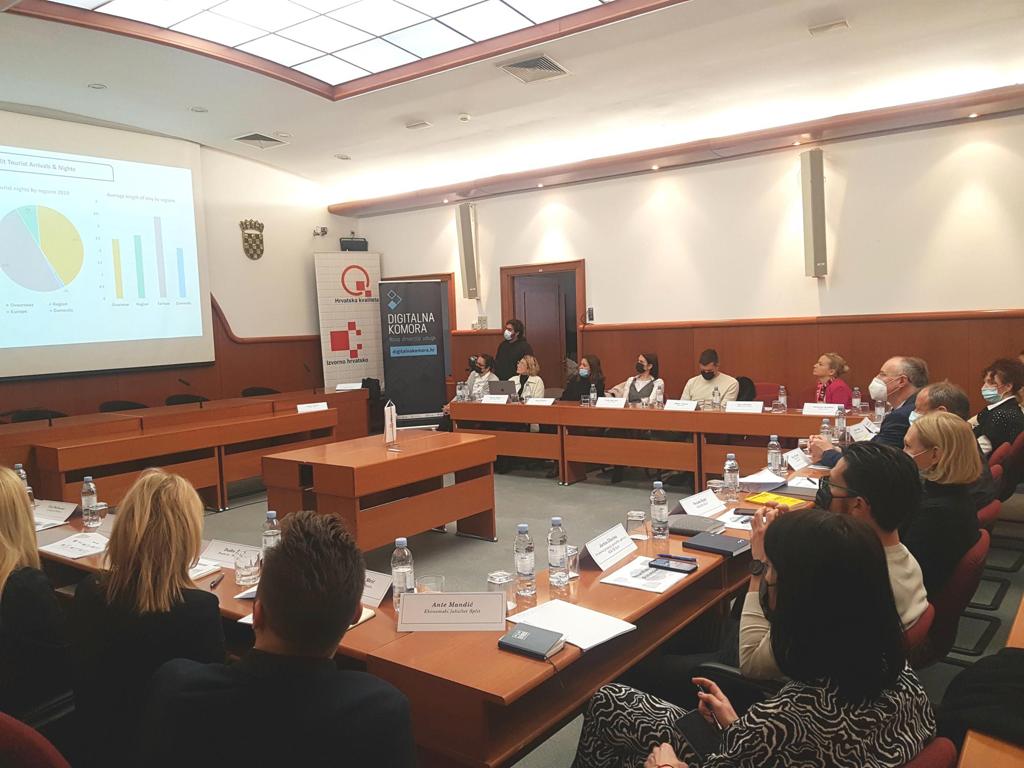
A quality introduction to the topic was provided by statistical data on Split tourist arrivals and the season in general. In addition to the excellent preconditions that Split has as a year-round destination, one of the biggest obstacles is air connections with the rest of Europe, which lack in the winter months. Hence, the initiative aims to increase the percentage of air arrivals.
Programs that would strengthen the offer are based on Split's digital-cultural and eno-gastronomic promotion and were presented by private sector stakeholders. These are the Split Light Festival, Gastronomy Month (working title Split on a Plate), Digital Nomads, and Winter Sailing.
Split Light Festival would include the lighting of public spaces and monuments and 3D mapping in the form of a trial four-day festival of light and music that would promote the city's creative industry and cultural heritage. The gastronomic offer of Split has been a critical tourist product for many years, and this year October would be marked as the month of gastronomy, during which Split restaurants would place special offers for locals and tourists. Digital nomads, for whom Split is a desirable destination with an average of 900 visitors a month, are also a niche with a huge space for growth and whose benefits were presented at the meeting. In the segment of nautical tourism, winter sailing was introduced, an offer that is sufficiently developed in the rest of the world and is a logical sequence in the Split postseason. The classic charter offer or sailing school for foreigners during city break stays will surely strengthen this sector toward sustainable development.
In the discussion that followed, which was attended by representatives of the tourist boards of Split and Split-Dalmatia County, Split Faculty of Economics, and the private sector, the presented solutions were discussed, with other offers and defined optimal dates.
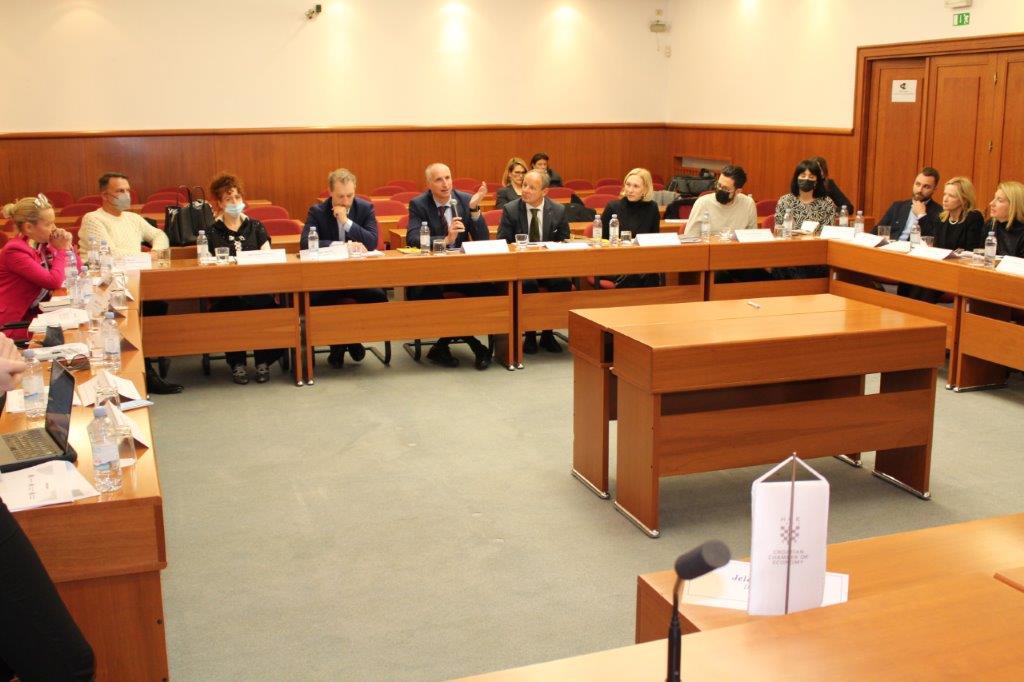
All participants agree that Split has enough offseason perks, based on which it can seek better connections with the rest of the world, and that there is a need to work together with all stakeholders, who can only bring change together. It was also emphasized that it is necessary to work more on the domestic tourism component and nearby markets and extend the season step by step, i.e., with flights a week or two earlier and end a week or two later, and gradually expand the circle. To move in that direction, it was concluded that a Business and Tourist Council would be established at the Croatian Chamber of Commerce - Split County Chamber, which will actively work on implementing this offer and other quality initiatives for some of them to come to life as early as 2022, or to be fully ready in 2023.
Five key takeaways from the Initiative organizers
1. Further analysis should be done with the Private & Public sectors and the Split Airport to determine what our focus should be in the future regarding flights, including the best dates.
2. After seeing the Split Airport statistics, we all agreed we need to flatten the curve of flight seasonality and that both the public and private sectors need to work together in creating a strategy on how to achieve that.
3. Restructuring the budget so that the initiatives that are put forward for building the offseason months should have precedence for future competitions.
4. The public sector supports these initiatives but funding may prove to be an issue. The Split-Dalmatia County Tourist Board competition for funding is now live.
5. Lack of communication between the Private & Public sectors continues to be one of the main issues. How will we move forward to ensure that communication improves. A decision was taken to form a sub-committee of public-private partnership, including the city, tourist board, Chamber of Economy and private sector tourism providers to move things forward.
Source: HGK
For more on travel in Croatia, follow TCN's dedicated page.
2022 Split Marathon Winners Announced!
February 27, 2022 - Despite harsh weather, the 2022 Split Marathon was successfully held in the Old Town, with very good results for the Croatian runners and where the African competitors returned triumphantly, after not being able to participate last year due to travel restrictions.
This Sunday the 22nd edition of the Split Marathon was held, and the winners have already been announced. In the morning, at the Split Riva, a crowd of runners and supporters gathered to start the traditional marathon, which this year had to face harsh weather with low temperatures and strong winds, but which in no way lowered the spirits of those present.
The 2022 Split Marathon, unlike last year, was held at the end of February instead of September. Let us remember that in the previous edition the participants enjoyed sunny and pleasant weather, but those who attended today can attest that the event was held in the same spirit. The race started at 9 o'clock, and a great wave of runners, led by the main contenders, started from the Split Riva.
This year's edition marked the return of runners from the African continent, who unfortunately were unable to participate in the 2021 marathon due to travel restrictions in place at the time. However, their return to Split in 2022 was triumphant, taking top results in all marathon categories.
In the half marathon, Josea Kimeli Kisorio from Kenya was the first to cross the finish line with a time of 1:04:33. Croatian Silvije Tomac came in fifth place, with a time of 1:10:37.
''I'm happy, of course. This was my first race in Split and an immediate victory. I will definitely be back next year. Yes, it was cold, especially in some places where there was a strong wind. But, all in all, it was possible to endure'', said Kisorio.
Among the women, also in the half marathon, it was Cavaline Nahimana from Burundi who came out on top with a time of 1:13:42.
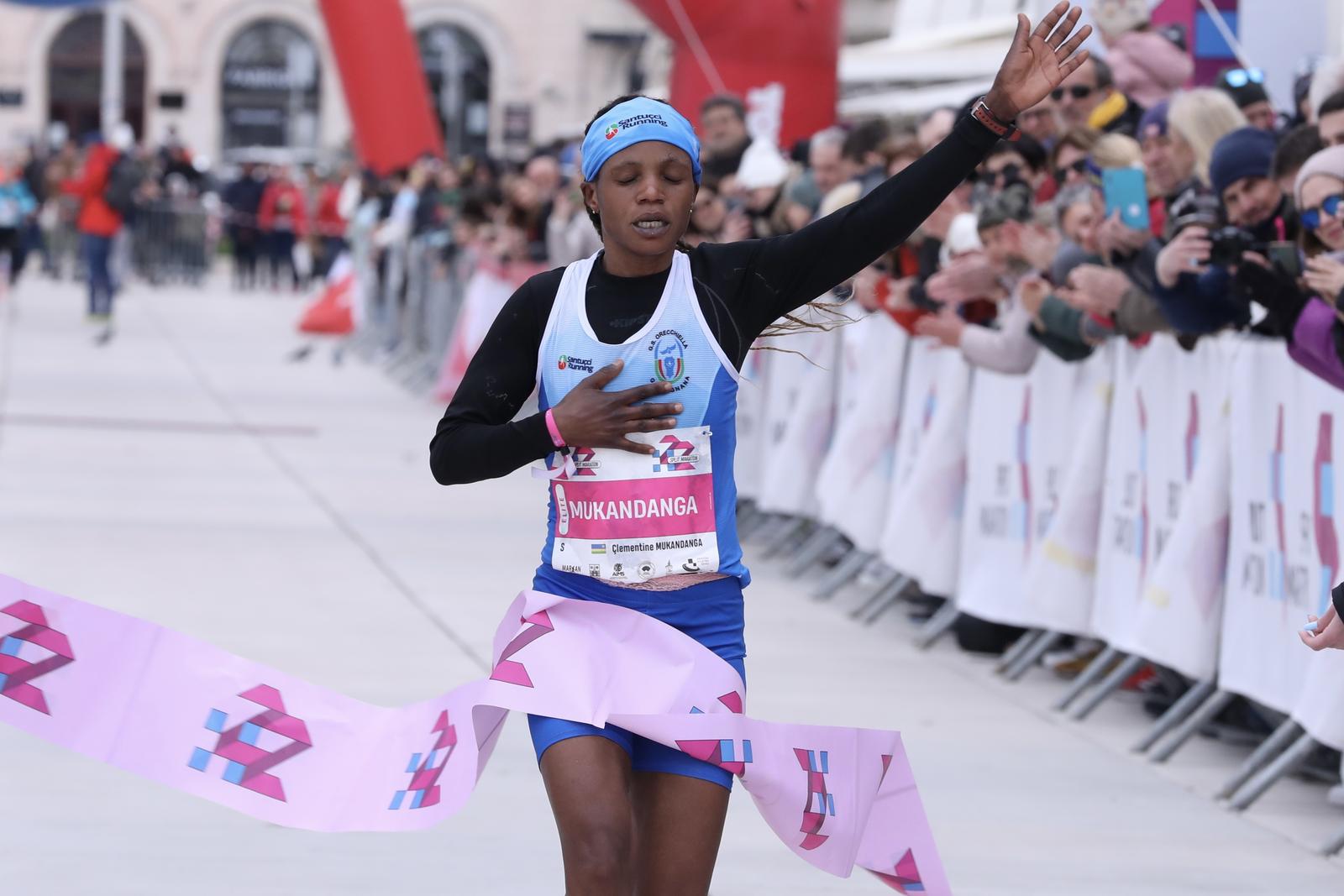
Clementine Mukandanga, winner of the 2022 Split Marathon Women's Competition. (Photo: Ivo Cagalj/PIXSELL)
Clementine Mukandanga, meanwhile, won the Split marathon and placed seventh overall. The Rwandan runner won with a time of 2:37:05. She was followed by the Czech Pastorova, who came in second, and third, fourth and fifth place went to three Croatians: Jasmina Ilijaš, Ingrid Nikolesić, and Kimberly Pašalić, respectively.
It was a great day for Rwanda, as Mukandanga was not the only one to celebrate, but also her compatriot Jean Baptiste Simukeka, who won the 2022 Split Marathon with a time of 2:21:22, first overall.
''I am very pleased with the victory. And the weather was good in the end considering the cold'', Simukeka said shortly, still breathing well.

Jean Baptiste Simukeka came in first place in the 2022 Split Marathon. (Photo: Ivo Cagalj/PIXSELL)
The Rwandan, crowned winner at the 2022 Split Marathon, came ahead of Morocco's Redouan Nouini. The Croatian Ivan Dračar, the winner of the previous edition, came third with a time of 2:27:28, certifying a day with very good results for the Croatian runners. His compatriot Kristijan Rubinić came fifth. The ninth was Goran Murić (2:42:13), and the tenth was Dalibor Vujević (2:43:40).
''The feeling is phenomenal. Winning third place in such strong competition is no small thing. The conditions did not go my way due to the wind. Until the 19th kilometer, I kept the connection with the two leaders, but in the end, I kept the pace and finished third, Dračar said.
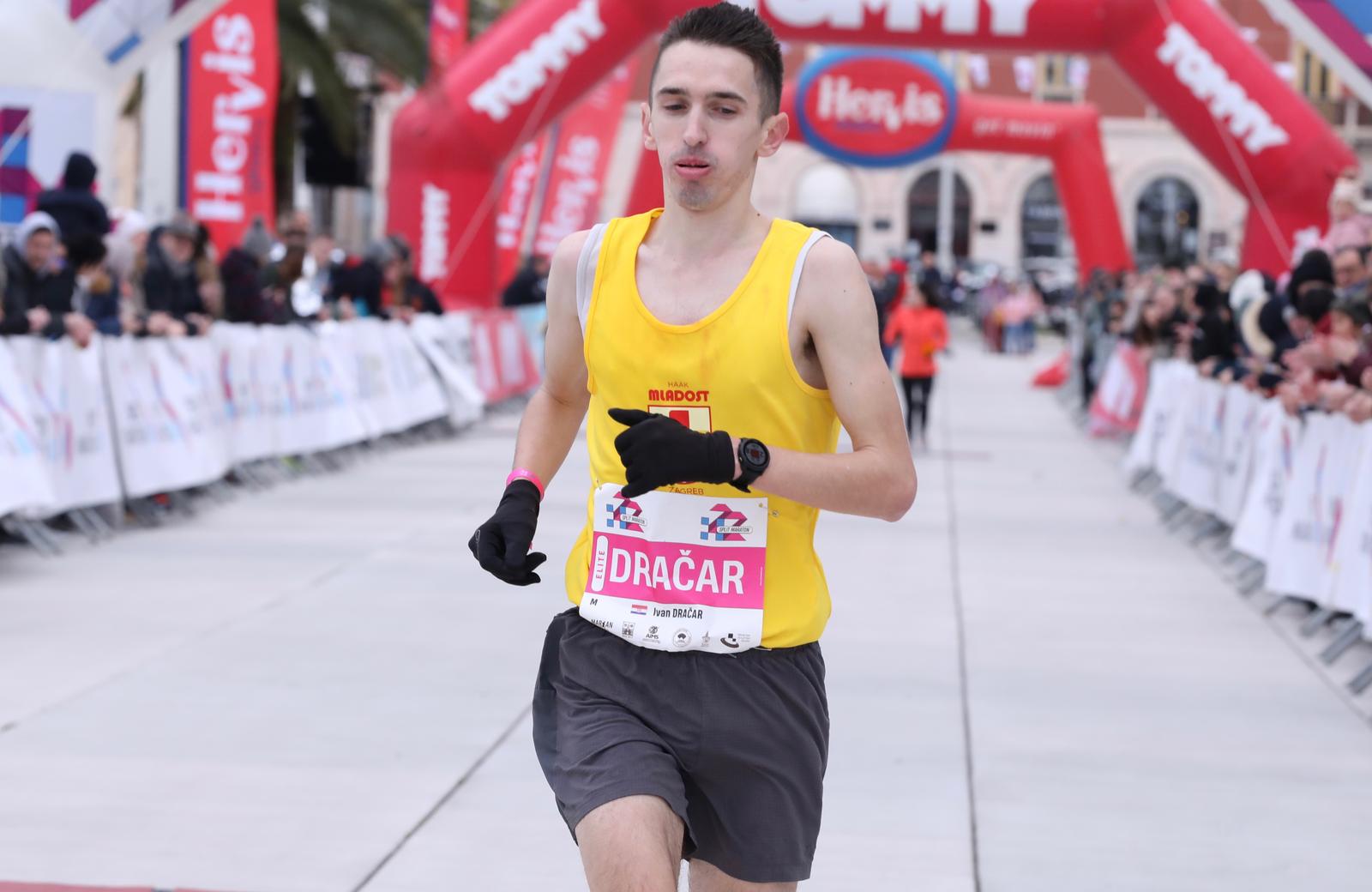
Ivan Dračar, who won the 2021 Split Marathon, came in third this year. (Photo: Ivo Cagalj/PIXSELL)
''This was my third marathon and third podium. Last year I won in Zagreb and Split, and now a third place here. All in all, I am very pleased. The atmosphere, too, was great.'', he added.
The official results of the 2022 Split Marathon are as follows:
Half marathon (absolute)
1. Josea Kimeli Kisorio (Kenya) - 1:04:33
2. Szemerei Levente (Hungary) - 1:04:39
3. Gert-Jan Wassink (Netherlands) - 1:07:35
4. Đuro Borbelj (Serbia) - 1:09: 20
5. Silvije Tomac (Croatia) - 1:10:37
Women's Half Marathon (Absolute)
1. Cavaline Nahimana (Burundi) - 1:13:42
2. Anja Fink (Slovenia) - 1:17:15
3. Gresa Bakraci (Kosovo) - 1:17:24
4. Špela Gonza (Slovenia) - 1:18:39
5. Jasmina Pitamic Army (Slovenia) - 1:20:04
Marathon (absolute)
1. Jean Baptiste Simukeka (Rwanda) - 2:21:22
2. Redouan Nouini (Morocco) - 2:25:01
3. Ivan Dracar (Croatia) - 2:27:28
4. Fredrik Kallstrom (Sweden) - 2:34:28
5 Kristijan Rubinić (Croatia) - 2:34:57
Marathon (women - absolute)
1. Clementine Mukandanga (Rwanda) - 2:37:05
2. Petra Pastorova (Czech Republic) - 2:54:01
3. Jasmina Ilijaš (Croatia) - 2:58:50
4. Ingrid Nikolesić (Croatia) - 3:06:00
5. Kimberly Pašalić (Croatia) - 3:10:20
The 2022 Split Marathon was, overall, a huge success returning to its original date in February, and the harsh weather didn't get in the way. A great example that shows that the city of Split has plenty of reasons, as in the sports field, to be recognized as a destination to visit during the winter.
Source: Slobodna Dalmacija
To read more about sport in Croatia, follow TCN’s dedicated page.
Following Zagreb, Pula, and Varaždin, Split Urban Garden Finally Coming to Fruition
February 26, 2022 - After Zagreb, Pula, Varaždin, and several other Croatian cities, a Split urban garden is finally coming to fruition.
The initiative launched by the Pametno for Split and Dalmatia party in 2020 is being implemented at the location they proposed from the beginning, at the Turkish Tower, reports Slobodna Dalmacija.
According to this party, Mayor Ivica Puljak recently issued a Conclusion which will turn a part of the land owned by the City, with an area of 4,325 m2, into an urban garden, all within the Pilot Project RU: RBAN, URBACT III Second wave which the City of Split is implementing with the Association for Permaculture.
"We have found a city plot of land around the Turkish Tower which will be used for an urban garden within this project. Our fellow citizens will be able to plant fruits, vegetables, and other desired crops without the need to go out of town. This is how you can live in an apartment, and at the same time cultivate a part of the land and in that way contribute to the household budget and joy at home, which is indispensable when you pick your own salad, chard, and other things. While we are waiting to plant the first vegetables at Turkish Tower, we will continue to push for urban gardens in other parts of the city, for which we are looking for ways and locations," said Branimir Urlić from the Pametno for Split and Dalmatia party.
"We are proud that our long-advocated idea is finally being realized. Just like we announced in the election program, Split is a green and wooded city in which our fellow citizens spend their free time in the open air. This urban garden is another step closer to realization," concluded Kristina Vidan, president of the Pametno for Split and Dalmatia party.
For more, check out our lifestyle section.
Norwegian Airlines Croatia Summer Flights Announced to Zagreb, Split, Dubrovnik and Pula!
February 24, 2022 - The latest flight news to Croatia as the Norwegian Airlines Croatia summer flights have been announced to Zagreb, Split, Dubrovnik and Pula this year.
After SAS Scandinavian Airlines, Norwegian Airlines has announced its summer program, reports Croatian Aviation.
Namely, Norwegian has announced 17 regular international flights to four Croatian airports in the upcoming summer flight schedule - to Zagreb, Split, Dubrovnik and Pula!
This well-known airline has confirmed its summer flight schedule, which will significantly increase the number of rotations and routes to Croatia compared to last year. In addition, the largest number of lines, or 7, has been announced to Split Airport.
7 lines to Split
Bergen - Split, three times a week, from June 18 to August 13,
Copenhagen - Split, from two to seven times a week, May 3 to October 29,
Helsinki - Split, two to five times a week, from March 30 to October 29,
Oslo - Split, one to seven times a week, from April 23 to October 29,
Stavanger - Split, twice a week, from June 18 to August 13,
Stockholm - Split, two to five times a week, from May 4 to October 29,
Trondheim - Split, twice a week, from June 18 to August 13.
6 lines to Dubrovnik
Bergen - Dubrovnik, once a week, from May 18 to August 13,
Copenhagen - Dubrovnik, up to twice a week, from April 2 to October 29,
Helsinki - Dubrovnik, twice a week, from May 3 to October 29,
Oslo - Dubrovnik, two to seven times a week, from June 4 to October 29,
Stavanger - Dubrovnik, twice a week, from June 18 to August 13,
Stockholm - Dubrovnik, up to four times a week, from May 7 to October 15.
3 lines to Pula
Helsinki - Pula, once a week, from June 4 to August 6,
Oslo - Pula, twice a week, from June 1st to October 1st,
Stockholm - Pula, once a week, from June 10 to August 12.
1 line to Zagreb
Copenhagen - Zagreb, twice a week, from June 25 to August 13.
Norwegian will operate up to 55 times a week on 17 announced routes to Croatian airports, thus offering almost 21,000 seats in the peak summer season weekly. The schedule could still be reduced according to passenger demand and the pandemic.
Thus, with this summer flight schedule, flights from Stavanger, Helsinki, Bergen and Trondheim have been relaunched, while the airline also returns to Pula Airport. The Copenhagen-Zagreb line will run only twice a week, though Croatia Airlines also operates on this route throughout the year.
For more on flights to Croatia and other travel announcements, make sure to check out our dedicated travel section.
All the Colours of Peristil: New Art Installation Has Split Square Dressed in Gold
February 23rd, 2022 - Named ‘Set the Bird Free, Lock Up the Weapons’, the new art installation at Peristil is only the latest in line of numerous interventions in the famous Split square
The Peristil Square in Split was covered in gold yesterday as part of an art intervention that also features an oversized gun locked in a gigantic cage. As reported by Slobodna Dalmacija, a plaque is displayed on the cage, inscribed with a short message - Imagine.
Created by Swiss-based gallerist Miloš Glavurtić, the artwork is named ‘Set the Bird Free, Lock Up the Weapons’. The pacifist message of the installation is reinforced with the sheet of gold covering the entire surface of the square, possibly alluding to the fact that wars are a lucrative business and are started with financial profit as a driving force.
The art installation is inspired by an earlier work of Croatian conceptual artist Vladimir Dodig Trokut, who in 1991 displayed a gun locked up in a bird cage, and titled the installation ‘The Songbirds’ Song’.
The golden attire is only the latest in line of many art interventions staged at Peristil as a means of protest against various social and political affairs.
Arguably the most famous event of its kind that took place on the square, the legendary Red Peristil was a daring act of a group of Split college students led by artist Pavle Dulčić. In 1968, they painted the entire square red, causing a scandal in the local community.
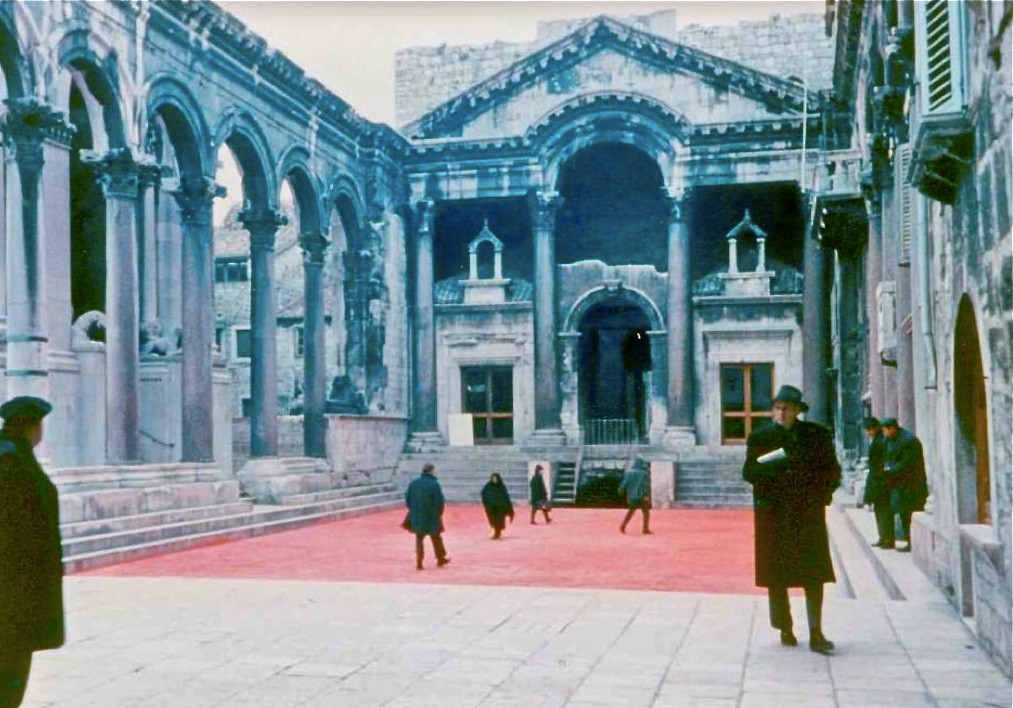 Red Peristil / Source: Petar Grimani, Facebook
Red Peristil / Source: Petar Grimani, Facebook
Seen as an act of vandalism at the time and condemned as a show of disrespect of cultural heritage, the act was later recognised as having artistic quality and is nowadays remembered as one of the first art interventions in these parts.
Twenty years later, Peristil turned green in an intervention staged by multimedia artist Ante Kuštre. Unlike his predecessors, Kuštre didn’t use paint to create his Green Peristil, but covered the square in green panels to raise awareness of environmental issues and bring attention to a deficit of green spaces in the city of Split.
On January 11th 1998, artist Igor Grubić marked the 30th anniversary of the Red Peristil with a work of his own. In the early hours of the morning, Grubić painted the square with a six-metre wide blotch of black.
The artist taped a note on the door of the Tourist Board office, saying: ‘In honour of the Red Peristil group 30 years later. Like a magic mirror, Peristil reflects the state of social consciousness. Black Peristil’.
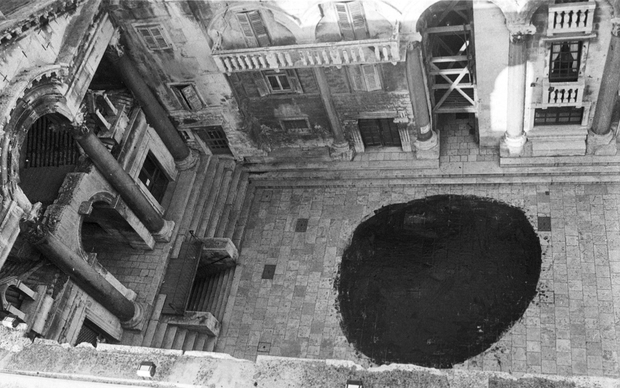 Igor Grubic, Black Peristil, 1998
Igor Grubic, Black Peristil, 1998
At the time, it wasn’t known who was responsible for the act, until Grubić went public months later as the author of the work that was meant to contrast ‘red history’ against ‘the dark present’.
The Peristil of Light was an ambient installation put up on two occasions, on Christmas 1991 and on Christmas 1997, by the painter Alieta Monas. It was a square of light that was placed on the northwest tower of Diocletian's Palace, together with a round piece of red cloth.
The legendary Red Peristil seems to have been a source of inspiration for many, including the artist Petar Grimani who marked the 40th anniversary of the controversial work by launching 40 flares in the main courtyard of Diocletian’s Palace. Named the Flying Peristil by the media, the action had the space lit red for a short period of time.
In 2009, Torcida staged a protest of their own, covering the square with an enormous yellow plastic bag inscribed with the word 'Kodeks' in blue, altogether reminiscent of shopping bags specific to the company Kerum.
The action was meant as a protest against ‘Kerumisation of Hajduk’, i.e. entrepreneur and then Mayor of Split Željko Kerum installing his acquaintances in high positions in Hajduk management.
Dubbed Yellow Peristil by the media, the intervention was condemned by the local authorities, with the mayor stating it wasn’t an art installation but a work of extremists helping the opposition to bring down the city leaders. Torcida in turn stated they were no one's puppet, but only wanted for the leading people of Hajduk to be selected on the basis of merit and expertise.
Next we have the Glass Peristil, a project that took place in the virtual world instead on the Split square. It was designed by art historian and artist Nikola Bojić, who in 2008 anonymously shared a project with the media, signed only as Majorian 458. It was an imaginary architectural project which envisaged construction of a commercial and residential building made of glass on the Peristil square, complete with helipads in the Vestibule and underground garages in the Diocletian’s Cellars, were connected to the Peristyle by escalators.
Even though the project obviously wasn't real and was meant to start a discussion about the need of putting culture before profit when designing public spaces, sensationalist headlines sent the public into a frenzy, and the work was called a ‘terrorist attack on public space, cultural monuments and the historic urban environment’.
And finally, we're back where we started, with gold being the latest colour to adorn the Peristil Square.
New Transavia Split Flights from France Announced for 2022 Summer
February 22, 2022 - The latest flight news to Croatia as new Transavia Split flights have been announced to France for the 2022 summer season.
Well-known low-cost airline Transavia has released tickets for two new routes to Croatia, reports Croatian Aviation.
Namely, the KLM - Air France member is introducing two new routes from Split Airport to Montpellier and Nantes. As expected, these are seasonal lines that will start operating in early July this year.
The Montpellier - Split - Montpellier line will operate from July 9, once a week, every Saturday, in the late evening. The line between Nantes and Split will start a day later, and two weekly flights have been announced on this line, every Thursday and Sunday.
Transavia has announced B737-800 aircraft with a capacity of 189 seats on these two new routes, and tickets are on sale on the company's official website.
In addition to these two new lines, Transavia will also operate to Split from Amsterdam, Paris, and Rotterdam, so the number of lines has now increased to a total of five.
In addition to Split, Transavia will operate in the summer flight schedule to Pula, Rijeka, Zadar, and Dubrovnik. It is certainly possible to expect additional operational changes to the mentioned airports.
In other Split Airport news, SAS recently announced it is planning the largest number of operations to Split Airport this season, with seven lines announced:
Copenhagen - Split, from 16.04., once a week, from the end of June to the end of August every day, two weekly flights available until the end of October,
Oslo - Split, from 14.05. once a week, from the end of June to the middle of August every day, one weekly flight available until the end of October,
Stockholm - Split, from 07.05., twice a week, from the end of June to the middle of August every day, one weekly flight available until the end of October,
Bergen - Split, from 27.06., twice a week until mid-August,
Gothenburg - Split, from 14.05., once a week, from the end of June to the middle of August every day, one weekly flight available until the end of October,
Kristiansand - Split, from 28.06., twice a week until mid-August,
Stavanger - Split, from 27.06., twice a week until mid-August.
Thus, Scandinavian Airlines is planning 34 flights a week on these seven routes to Split Airport in the peak season.
For more on flights to Croatia and other travel announcements, make sure to check out our dedicated travel section.
2nd Split Winter Tourism Roundtable on March 1: Presenting Quality Content
February 22, 2022 - For Split winter tourism to succeed, it needs quality content. The 2nd Split Winter Tourism Roundtable will present precisely that.
Developing winter tourism in Split will not happen overnight, but progress is being made. After the success of the first Split Winter Tourism Roundtable a few weeks ago (you can read all about it, as well as the minutes of the meeting in Reflections on the First TCN Split Winter Tourism Roundtable), the second roundtable will take place on March 1, with Mayor Ivica Puljak once again confirming his attendance - we are very grateful for his support, as well as all the other stakeholders, who are supporting this initiative.
Our thanks too to Natasa and Joze from the Split Croatian Chamber of Commerce, who are hosting the next roundtable - public/private partnership is key for this initiative to succeed. And a huge thanks to the fabulous female quartet of Jasmina Kruscic from Chops Grill (host of the first roundtable), Mare Mustapic of Zinfandel/Brasserie on 7, Jelena Tabak of Dujkin Dvor, and TCN's very own Daniela Rogulj, who have done a LOT of work behind the scenes, as well as star TCN intern Toni Petricic, who has done some outstanding data analysis on airport passenger numbers, and suggested areas to focus on extending the flight season by a little. An overview of his findings will be presented at the meeting.
The roundtable will be attended by representatives of University of Split, Faculty of Economisc who are working on Strategy of development of Split 2030, tourism included. The document is not yet finalised, but they will give an overview of the direction of the strategy and its key points.
The next roundtable will focus on content, content, content. There is no point having winter flights if there is no content. We will be focusing on four areas - gourmet, 3D mapping, winter sailing, and digital nomads. All presentations will be recorded and put on YouTube so people can see them, as well as being reported on by TCN.
Moderator par excellence Michael Freer is sadly not available, so I will attempt to fill his considerable shoes in the role.
For more detail on the content of the second Split Winter Tourism Roundtable, this is from the email sent by the Split Chamber of Commerce - thank you for your support:
We are formally inviting you to attend the follow-up Split Winter Tourism Roundtable meeting, to be held at HGK Split on March 1 at 10 am.
According to the conclusions of the first Round Table held, we will be presenting four possible programs that might enhance the post season target period which could make the season longer, i.e. November
The program of the round table is as follows:
Moderator: Paul Bradbury
Introduction: presentation of arrivals and statistic and why should we boost November
1) Split-Dalmatian Gastro capital: Ingrid Badurina Danielsson and Dubravka Tomeković Aralica (Taste the Mediterranean and Gault&Millau)
2) 3D mapping - osvjetljavanje Grada: Mislav Čizmić i Ivana Burazin (Promo plan)
3) Winter sailing: Nick Hathaway (45 Degrees Sailing)
4a) Realising Split's Fantastic Potential Through Community: Nikolina Kukoč (Split Tech City).
4b) Why Split Should be the Regional Capital for Digital Nomads, and How to Make it so: Tanja Polegubić (Saltwater Nomads)
Other participants will be representatives of Tourist board (City and County), Mayor of Split, Mr. Puljak and representatives of the initiative (Total Croatia News and HGK).
TCN will of course report on the event in detail and make all the presentation videos available on our YouTube channel as sson as resources allow.
You can follow the Split winter tourism initiative on the dedicated TCN section.
2022 Cruise Ship Season in Split Begins with Arrival of 'Bolette'
February 22, 2022 - On Monday morning, the Bolette cruise ship, carrying around 600 passengers, officially launched the 2022 cruise ship season in Split.
On the morning of February 21, the 283-meter-long "Bolette," which sails under the flag of the Bahamas, sailed into the city port of Split, thus officially beginning the 2022 cruise ship season in Split. The cruise ship arrived carrying around 600 passengers and sailed to Split after the port of Valletta in Malta, reports Slobodna Dalmacija.
This is the first announcement of a good cruise ship season ahead.
"Yes, this is the first arrival this year. The ship is moored at an external berth. As far as I know, these are older travelers on classic cruises around the Mediterranean. They stay in the city until 5 pm, and until then, they have organized walking tours of the Palace. For this year, we have a total of 323 announcements of cruise ships, and we will see if all of them come true. It all depends, of course, on the pandemic, but the situation is still improving, and we are all optimistic. Guests on cruise ships have strict epidemiological measures and constant testing, as well as those before leaving the ports," said Vicko Vrgoč, head of operations at the Split Port.
Vrgoč reminds us that the cruises suffered during the strongest wave of the pandemic. While the situation is slowly calming down, everyone knows that the pandemic can bring complications again.
"Of course, we wish for record years like 2016, when we recorded as many as 286 cruise ships entering the city port of Split. The next three cruisers for this year will arrive in mid-March, after which they will become more frequent, according to the announcements," Vrgoč added.
Over 310,000 vessels arrived in Croatian seaports in 2021, 25% more than 2020. According to the national statistical office, there were 27.3 million passengers, up 45.4% on 2020 but down 23% on 2019.
Most of the passenger turnover was recorded from April through September, and it was highest in August and September, in keeping with the peak tourist season.
In Q4 2021, 60,000 vessels arrived in Croatian seaports (+9.5%), and there were 3.6 million passengers (+37%).
As for passenger turnover in Q4, it was highest in Split with 580,600 passengers (+42%), followed by Zadar with 366,000 (+21%) and Preko on Ugljan island with 326,000 (+18%). On the other hand, the highest passenger turnover increase in Q4 was recorded in Dubrovnik with just under 147,000 (+122.6%), followed by Rabac and Hvar, which saw increases of about 90%.
For more on travel in Croatia, follow TCN's dedicated page.
Zagreb to Dubrovnik: the Ultimate 10-day Road Trip Itinerary
21 February 2022 - It’s never the wrong time to start planning the perfect getaway to the paradise that is Croatia. We decided to give you a hand in planning the perfect 10-day road trip from Zagreb to Dubrovnik (plus some bonus island time!) that showcases the best the country has to offer.
The best way to discover Croatia is by car, giving you the freedom to go off the beaten path and chart your own adventure around the country, all the way from Zagreb to Dubrovnik.
Before we jump into it, do be aware that most car rentals in Croatia are manual transmissions! Automatic cars are available for rent, though mostly by larger rental companies like Sixt, and are more expensive.
If you’re not a confident driver, no need to worry, there are plenty of private bus companies that run daily trips to most cities and tourist attractions during the high season (June - September). In larger cities such as Zagreb and Split, bus schedules are also available online. Transfers between major ports and the islands are also regularly serviced by ferries and catamarans.
Day 1: Zagreb
Welcome to Zagreb, the capital and largest city of Croatia! Nicknamed the city of museums, Zagreb is home to over a dozen award-winning museums such as the Archeological Museum, with over 450,000 artifacts and monuments.
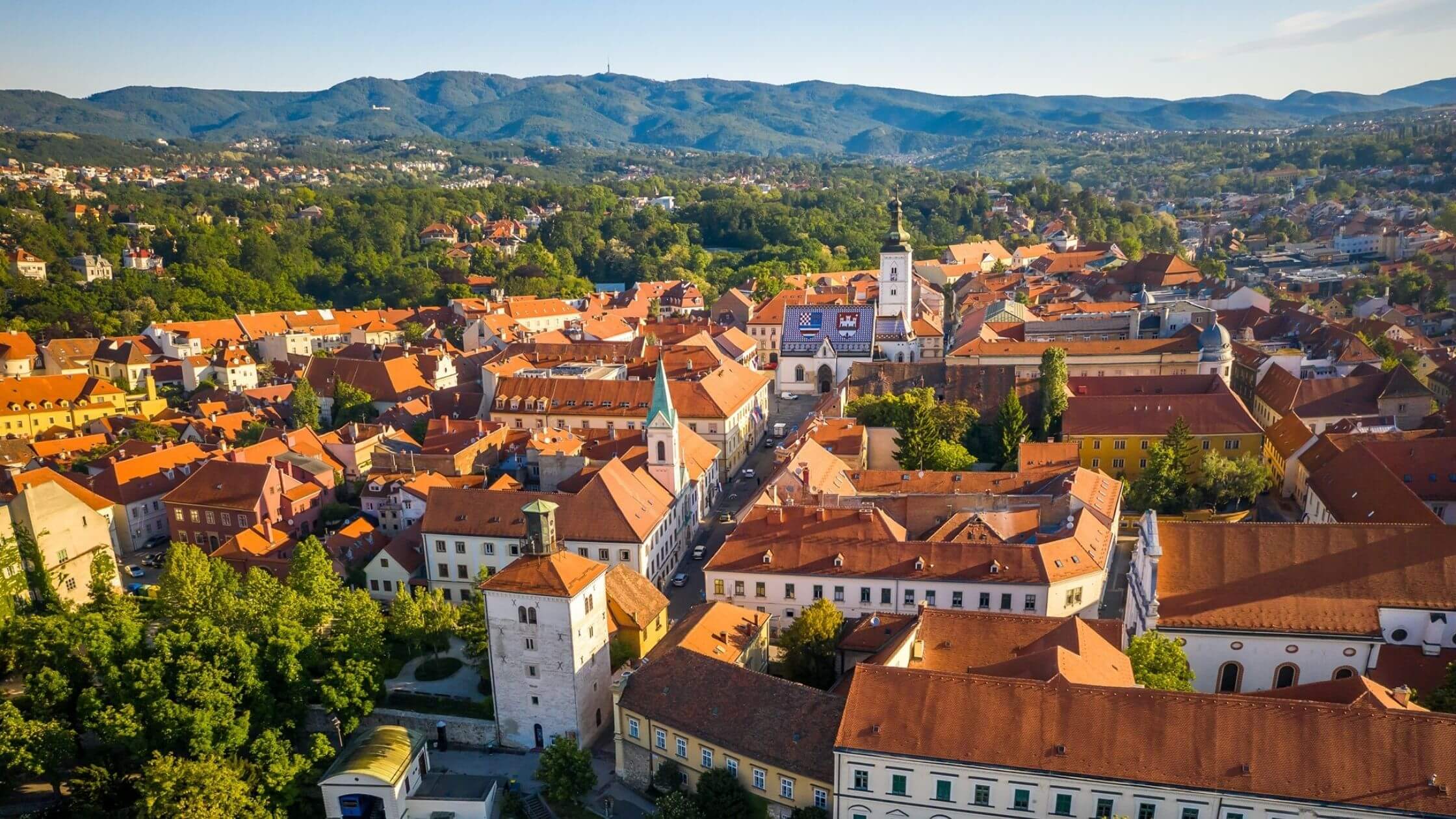
The gorgeous buildings of Upper Town in Zagreb. Visit Zagreb/Facebook.
Cultural landmarks of the city include Ban Jelačić Square which has existed since the 17th century, the Zagreb Cathedral, or the magnificent Croatian National Theater whose unveiling ceremony was attended by Austro-Hungarian Emperor Franz Joseph I. So, make sure you squeeze in some time for a walking tour to absorb the sights of Zagreb’s Old Town.

Evenings on Tkalčićeva Street, Zagreb. Visit Zagreb/Facebook.
Hungry? Head to Dolac market, Zagreb's main open-air farmers market to pick up some fresh, seasonal produce and souvenirs. You can also choose to end your day with a tasty meal and local wine from any of the excellent restaurants, bars, and cafes along Tkalčićeva Street.
Day 2: Rovinj
After a bustling day in Zagreb, the enchanting city of Rovinj is a splendid change of pace. Perfectly situated on the Istrian peninsula, the city boasts a rich heritage, from being settled by Venetian tribes, to becoming part of the Byzantine and Frankish Empires, all reflected in the diversity of the city’s architecture, art, and culture.
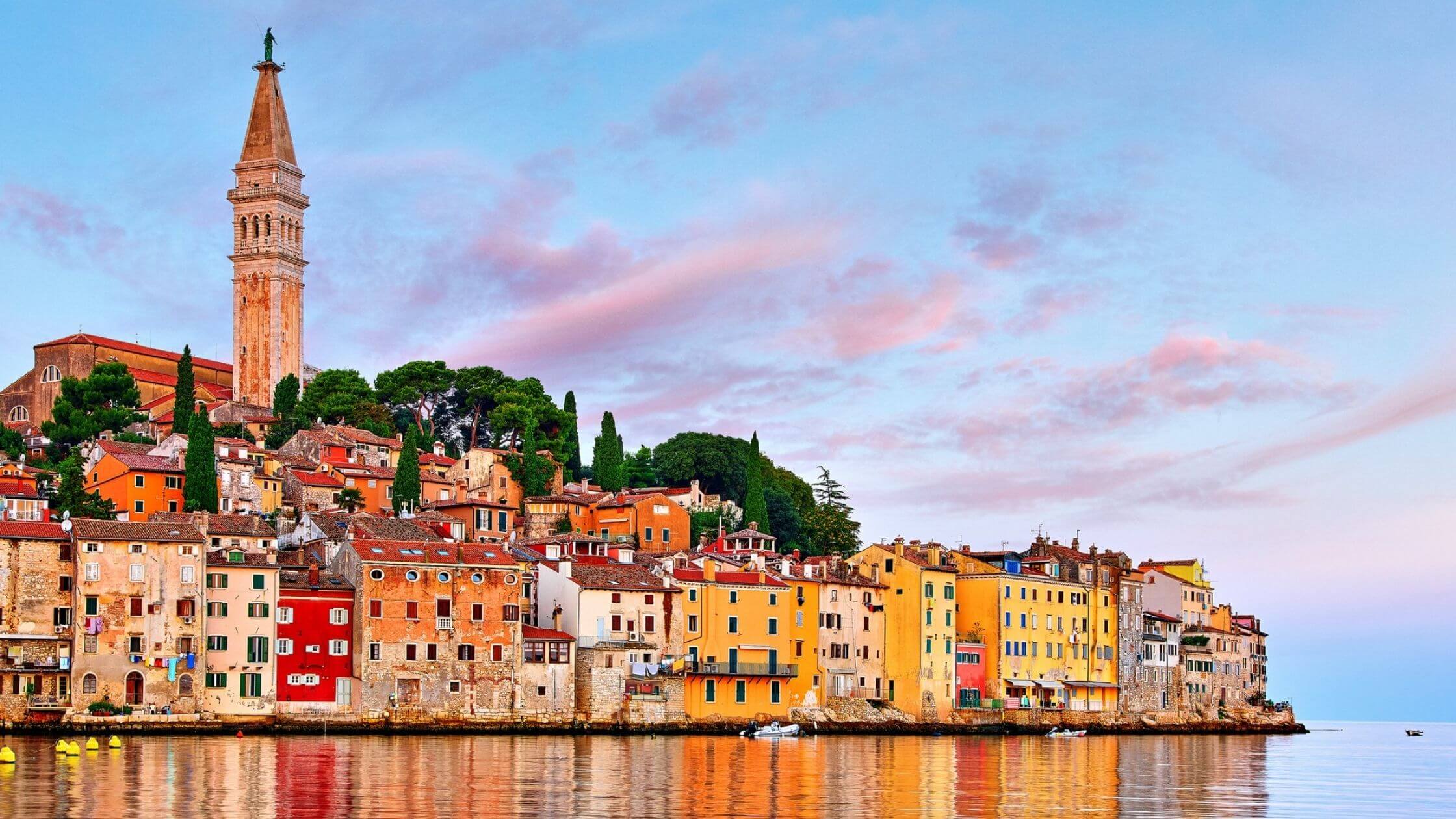
This stunning setting has been a popular film setting for movies such as "The Hitman's Wife's Bodyguard". Rovinj Tourist Board/Facebook.
Stroll along the beautiful cobbled streets and narrow alleys of Rovinj Old Town and make your way towards St. Euphemia Cathedral. Along the way, you should pass by Grisia Street, lined with souvenir stalls and galleries with the most unique pieces to add to your collection.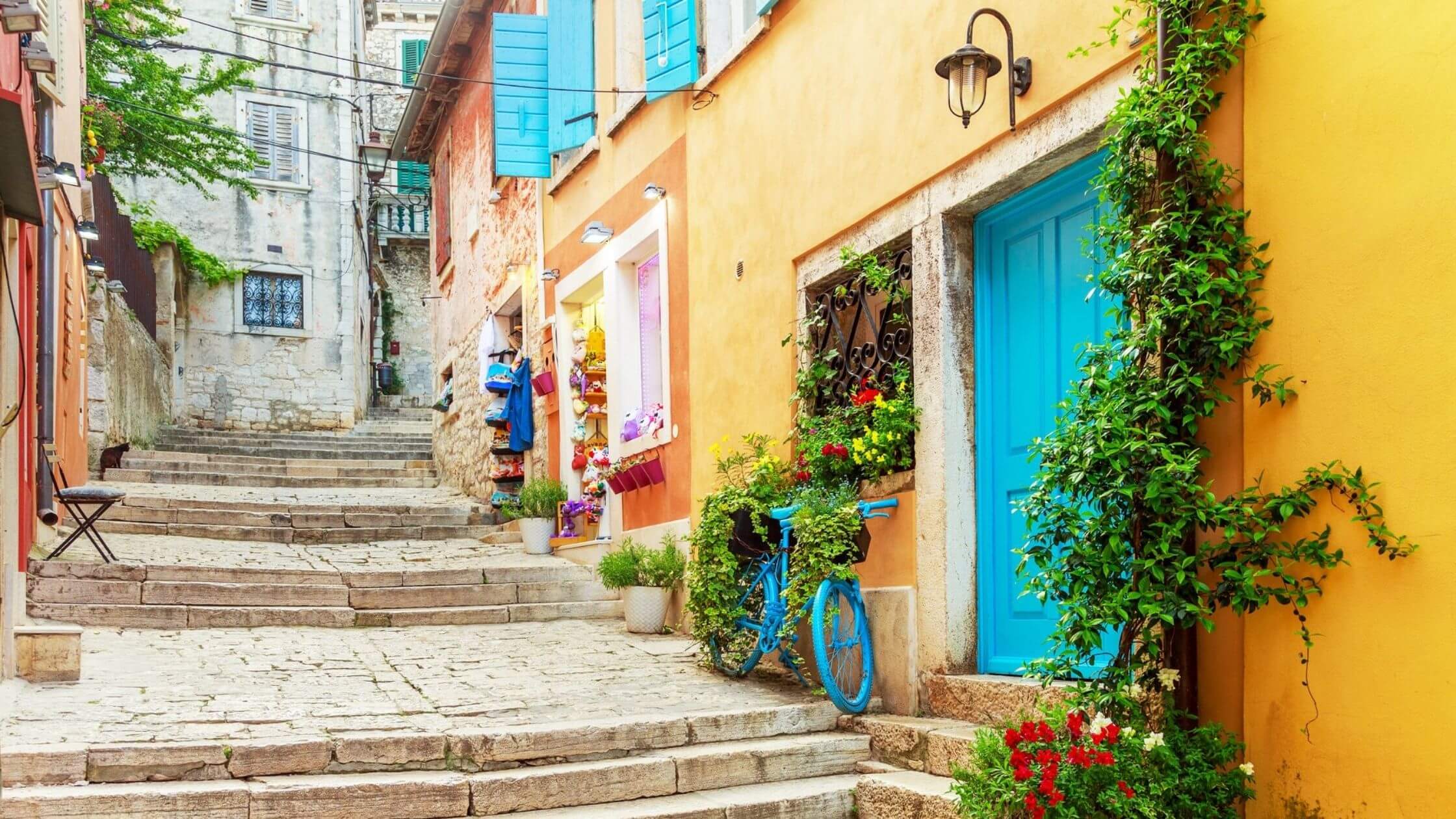
The charming, picturesque streets of Rovinj's Old Town. Rovinj Tourist Board/Facebook.
If you have time to spare, take a day trip to Sveta Katarina, a small picturesque island that’s a mere 10-minute water taxi ride from the pier. Spend the afternoon taking a dip in the aquamarine waters of the bay, or hike on one of the numerous trails dotted around the island, or both!
Alternatively, sit back and relax on some of the most beautiful beaches in Istria such as Amarin, Borik, or Valdaliso Beach.
Day 3: Pula
Before leaving the Istrian Coast, make Pula the next stop on your road trip. Serving as the capital of Istria, Pula was the main military port for the Austro-Hungarian Monarchy at the height of its military glory. Today, remnants of these times are reflected in the city’s breathtaking landscape.
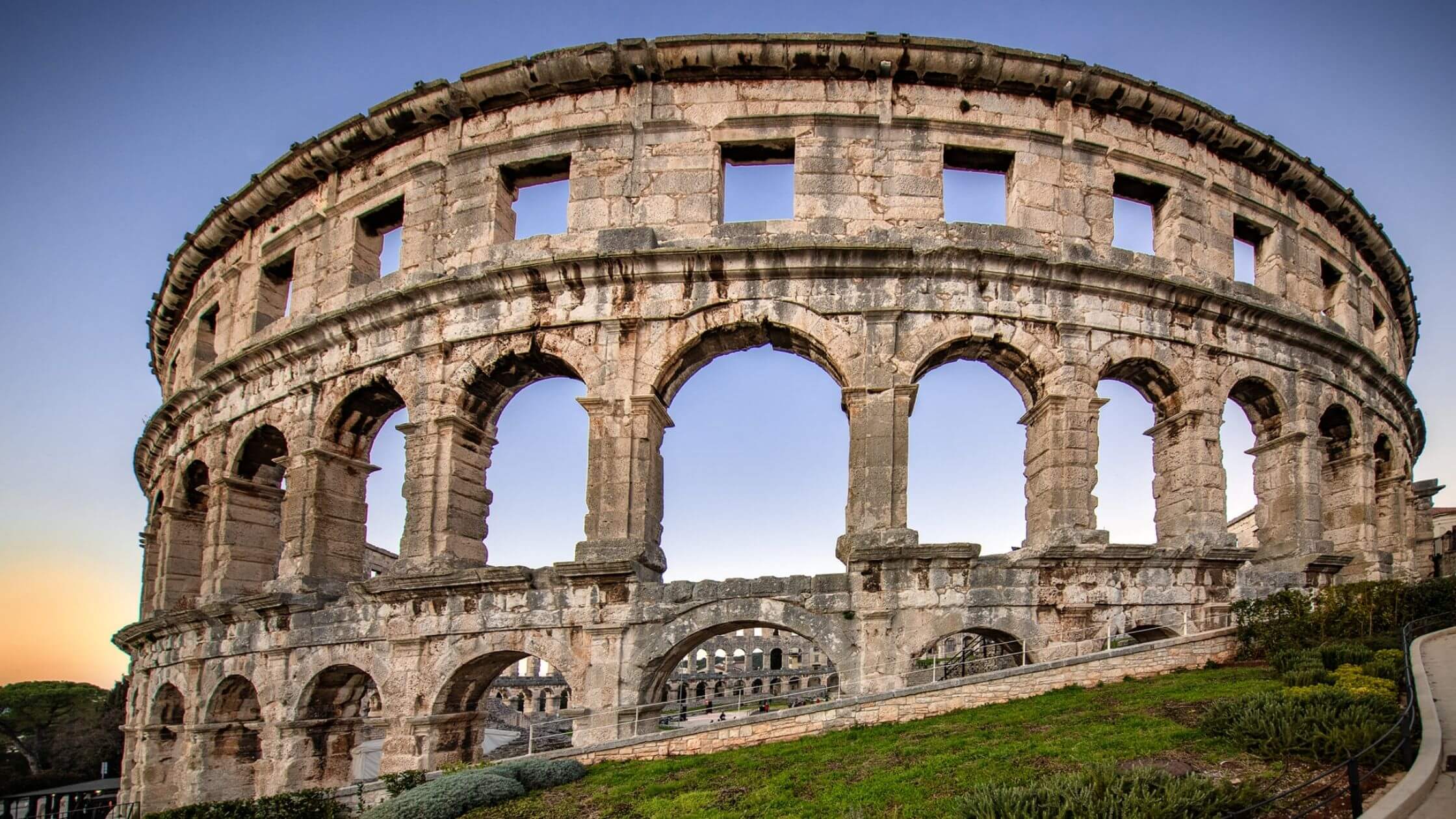
The Pula Arena frequently hosts concerts and festivals throughout the year. Pula Plus/Facebook.
The famous Pula Arena, one of the most well preserved Roman amphitheaters in the world, is a must-see! Another not to be missed landmark is the Temple of Augustus, a monument dedicated to the first Roman emperor in honor of his rule.
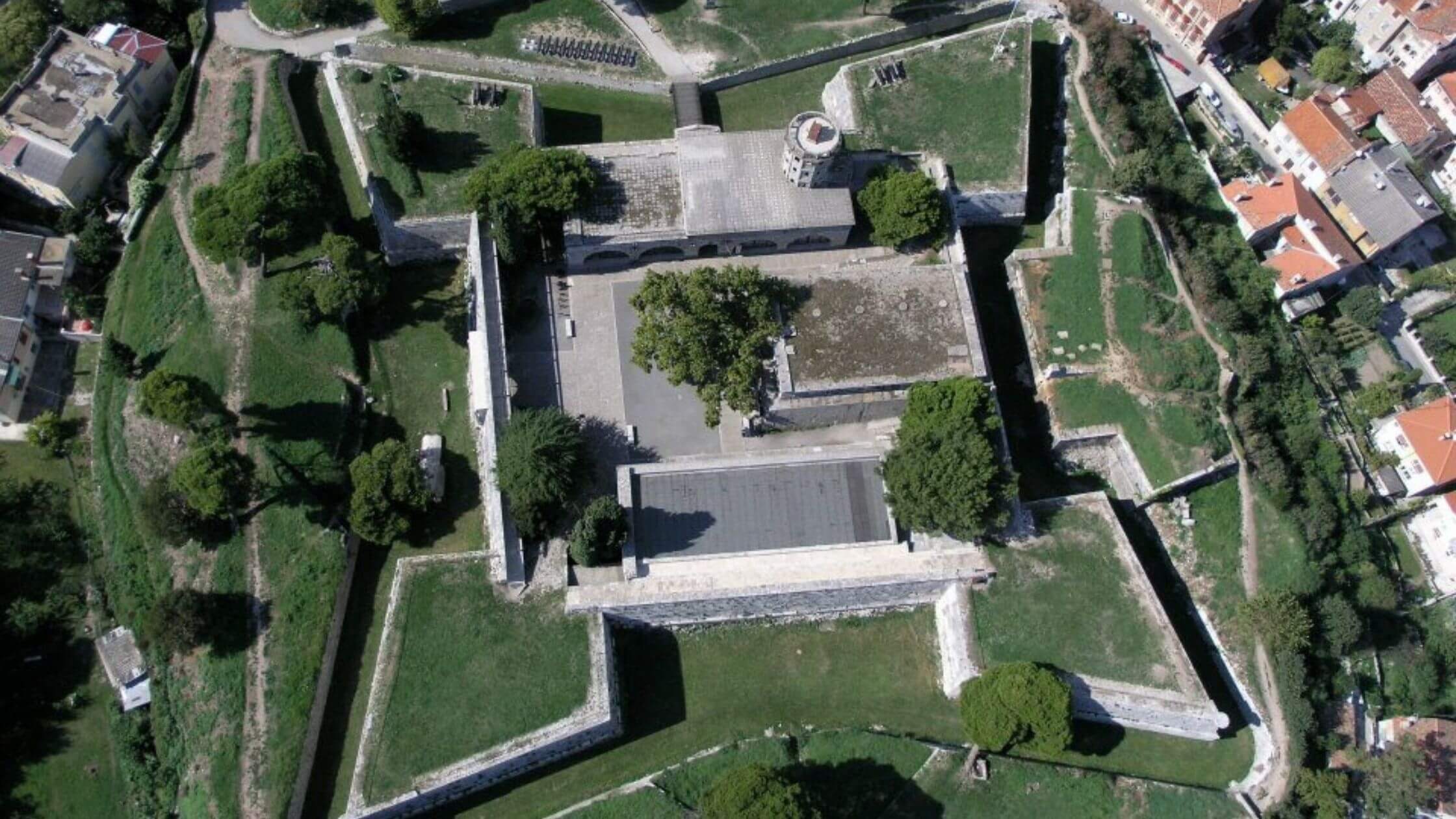
The unique shape of Fort Puna Christo. Pula Plus/Facebook.
Also check out the impressive Fort Punta Christo, which includes an underground section to explore and a well-stocked rooftop bar for refreshments after. You can also enjoy magnificent 360-degree views of Pula from the Venetian Fortress (Kaštel) which also houses the Historical and Maritime Museum of Istria.
Day 4: Plitvice National Park
Although Croatia boasts some of the best coastlines in the world, Plitvice Lakes National Park consistently appears in the top must-see places to visit in Croatia, and for good reason! This UNESCO World Heritage Site holds the title as the oldest and largest national park in Croatia, famous for its gorgeous turquoise lakes. Well worth the detour inland.
 The main walkway of Plitvice Lakes National Park. Plitvice Lakes National Park/Facebook.
The main walkway of Plitvice Lakes National Park. Plitvice Lakes National Park/Facebook.
Be aware that the park can get very crowded during the season! To avoid this, just be prepared to visit early (7-8am), or better still, stop by during off-peak seasons where the park transforms into the perfect winter wonderland.
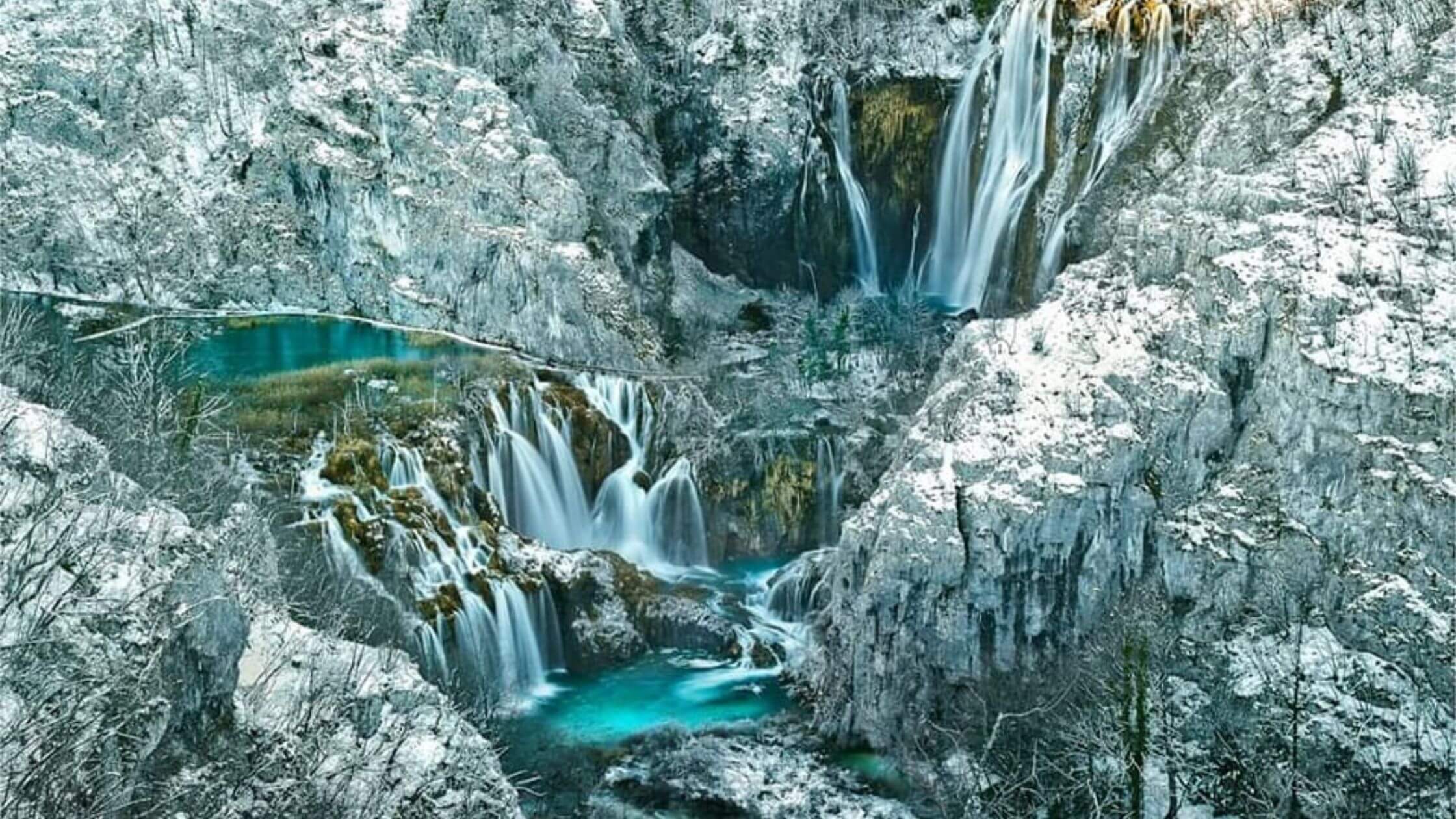
Plitvice Lakes National Park/Facebook.
Day 5: Zadar
After a day in the lush forests, take a scenic drive back to the Dalmatian coast and spend a day in the charming city of Zadar, the oldest continuously inhabited Croatian city. Today, cozy cafes and art galleries are seamlessly woven into remains from the times of Julius Caesar and Emperor Augustus.
Enjoy a relaxing stroll through Old Town and admire the historical architecture including the Church of St. Donatus, the Landward Gate, the Cathedral of St. Anastasia, and the Roman Forum.
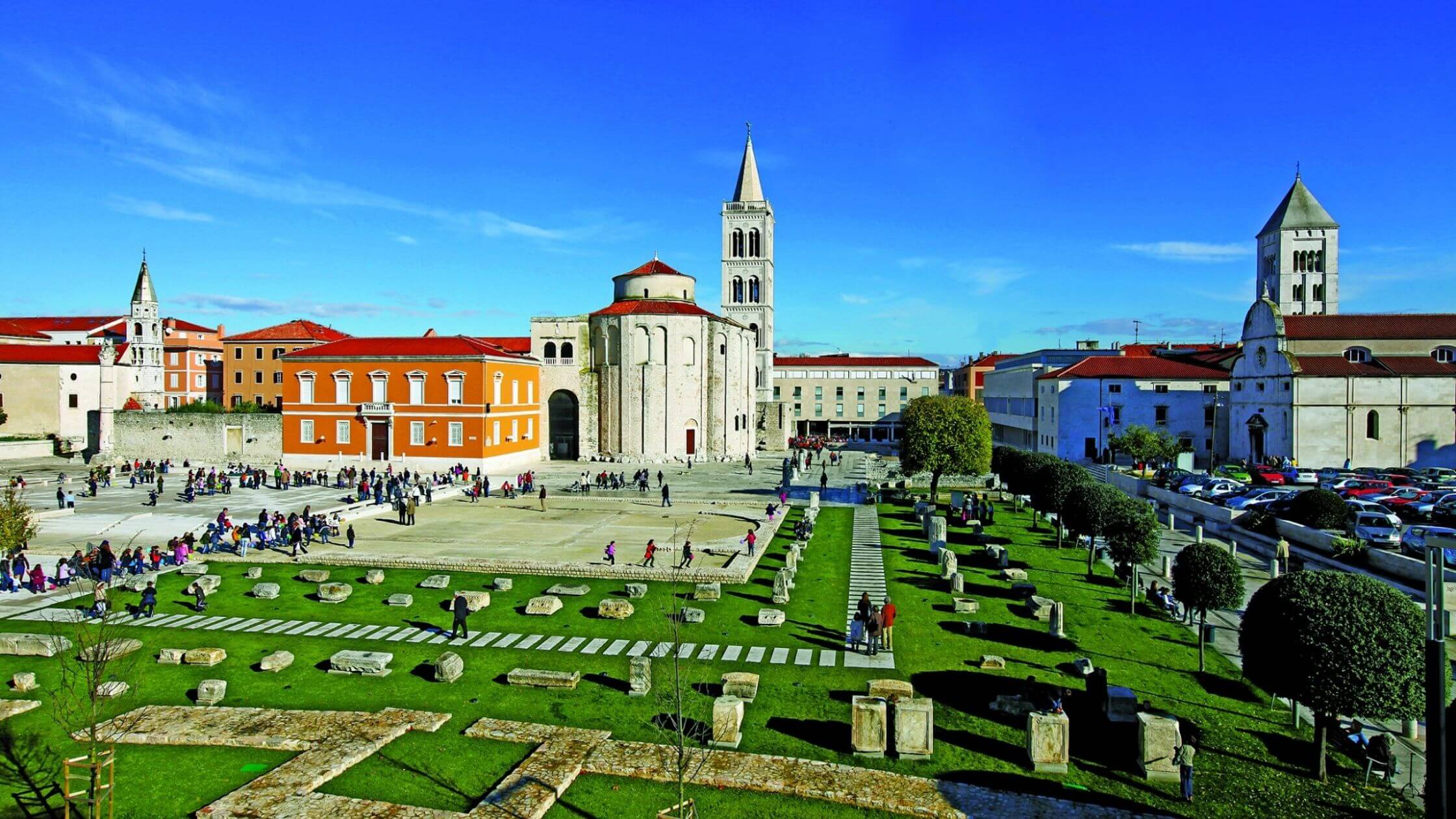
Ruins in the Old Town of Zadar. Zadar Region/Facebook
Along the way, catch the famous Sea Organ, and a sunset so beautiful, it even captivated Alfred Hitchcock! Just after sunset, take in the light show at the Sun Salutation, an installation created by Nikola Bašić, the same artist who designed the sea organ.
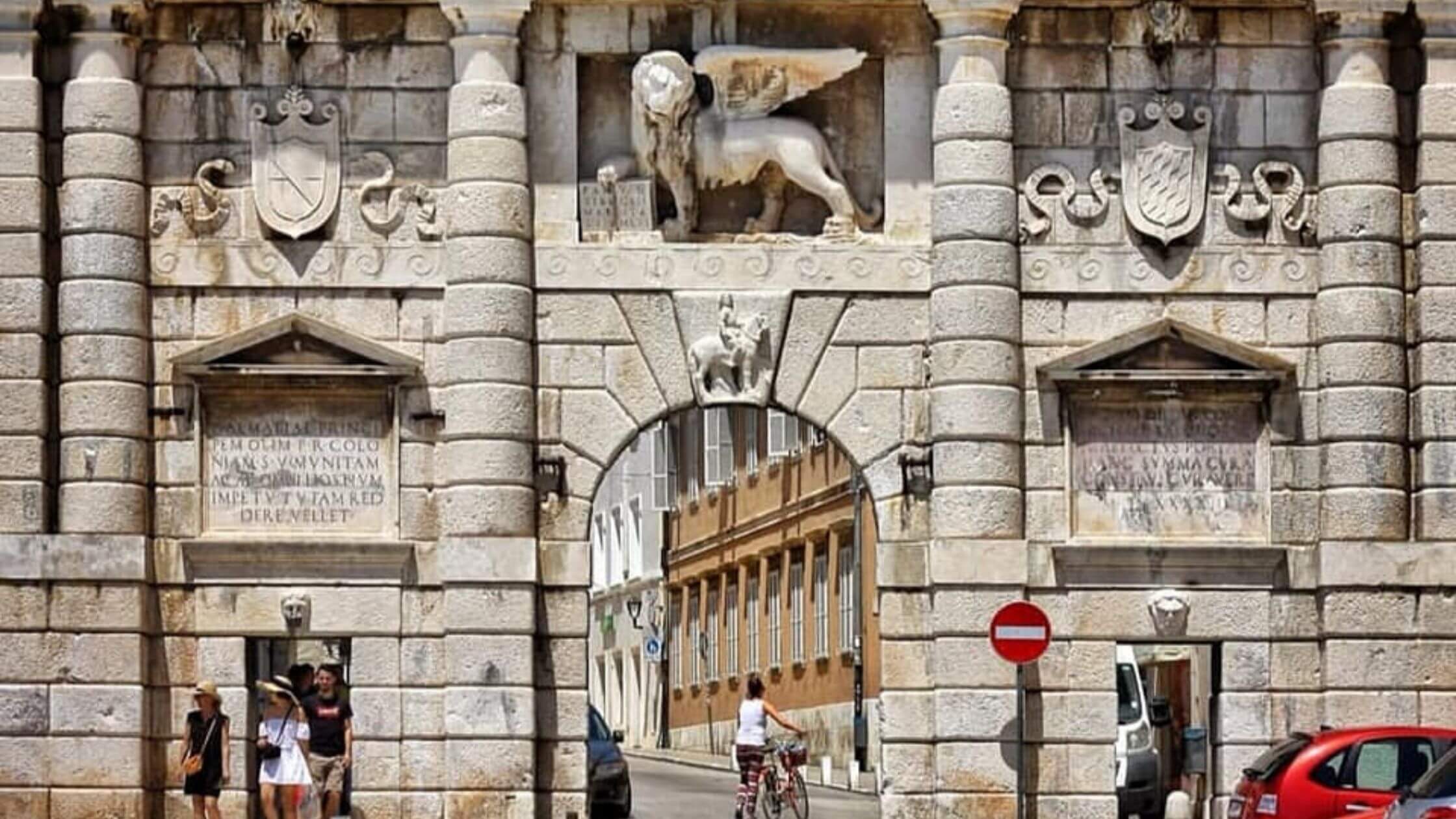
The Landward Gate, Zadar. Zadar Region/Facebook
If you have some time in between, head to Pag Island to try some of the famous Paski Cheese or to Nin, home to Queen’s Beach, the longest sandy beach in Croatia. Other gorgeous beaches along the coast of Zadar include Kolovare and Borik.
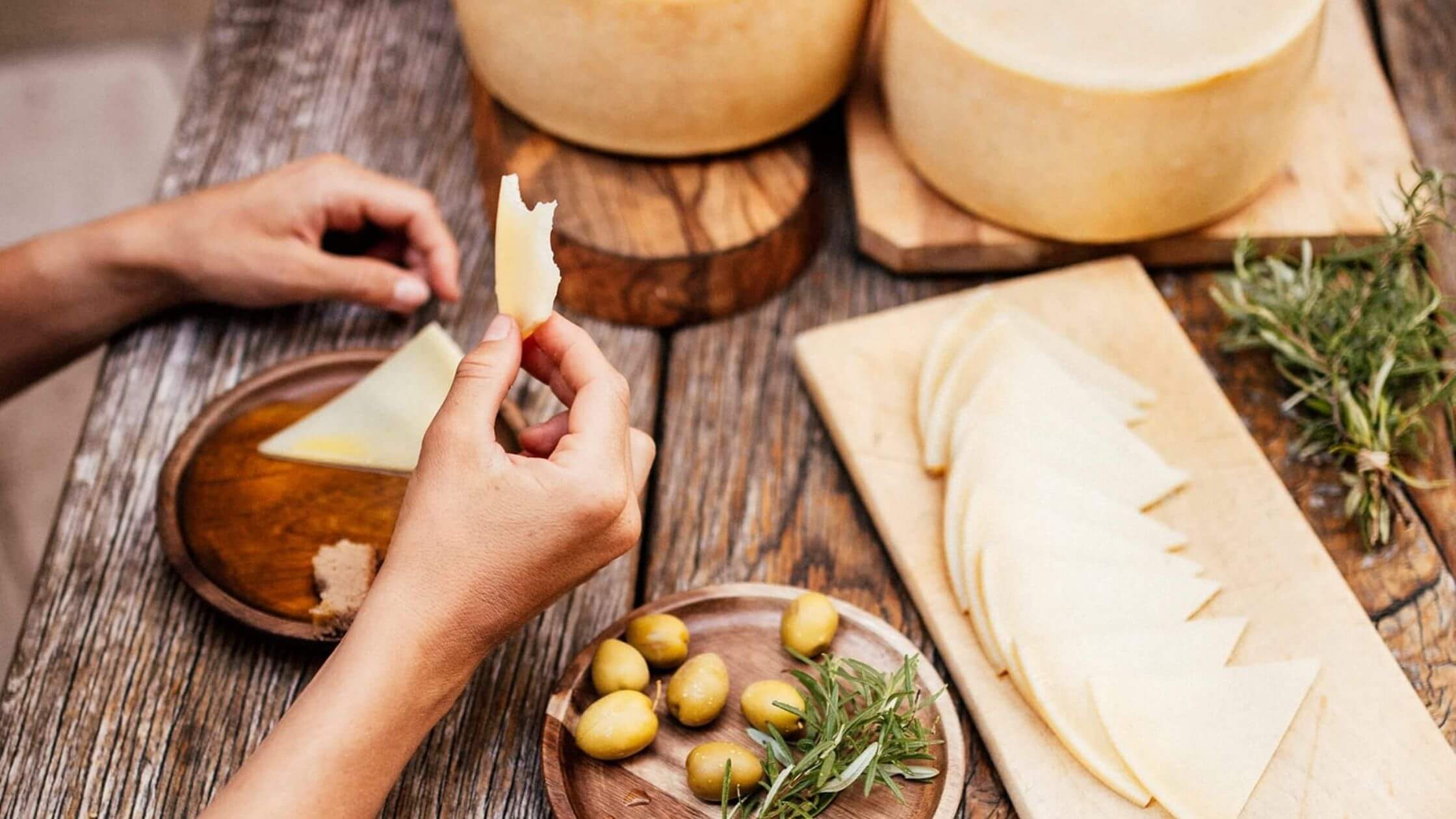
Award-winning sheep's cheese from Pag Island. Pag Tourist Board/Facebook.
Day 6: Split
Welcome to Split, the largest city in Dalmatia, and second-largest in all of Croatia. The city was founded as the Greek colony of Aspálathos between the 3rd and 2nd century BC.
It was later where Diocletian's Palace was built for the Roman emperor in AD 305. The palace also houses the Peristil, or the main square, another great place to enjoy some coffee and people-watch in addition to the Riva promenade.
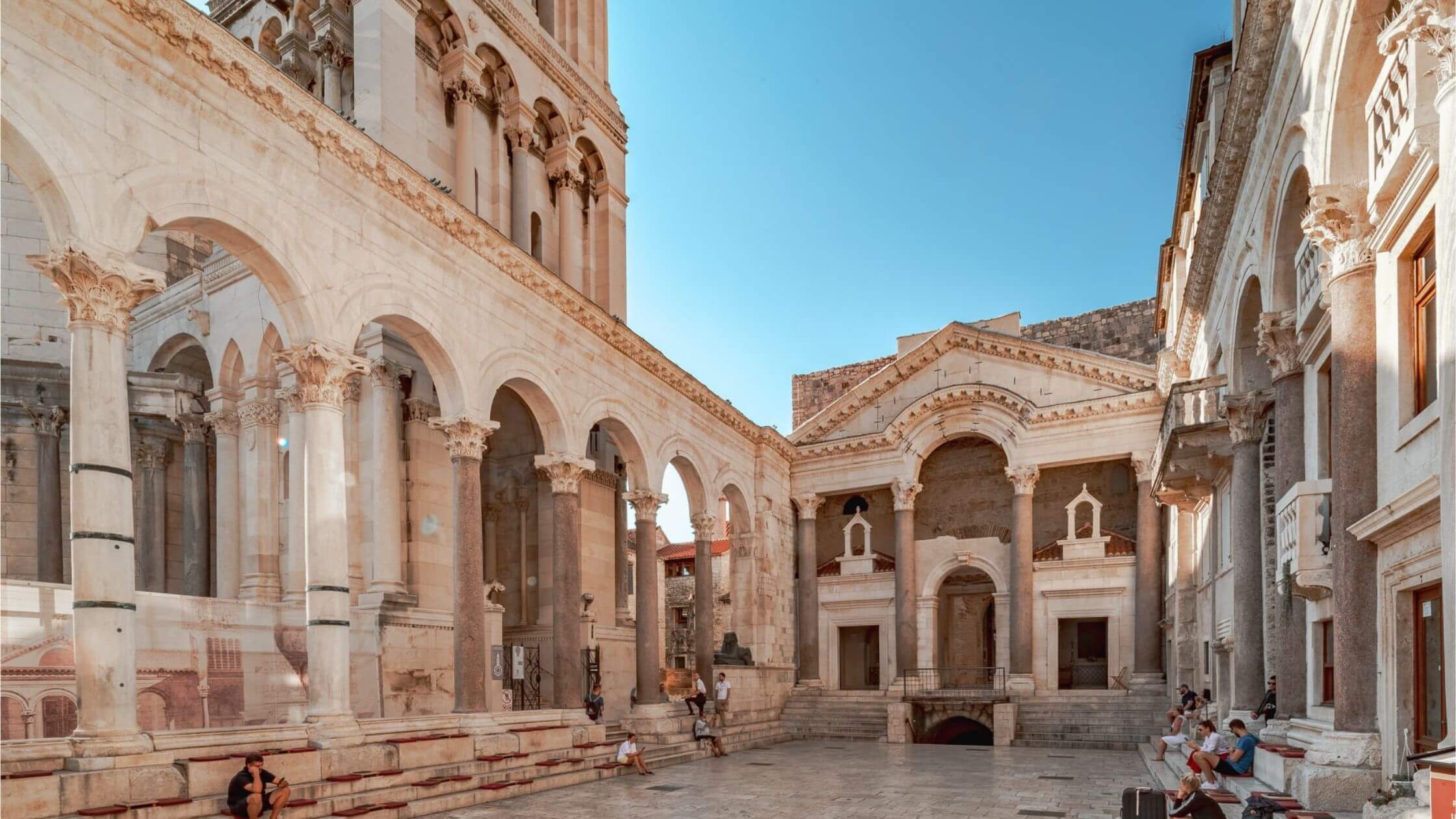
Enjoy a drink inside the walls of the Diocletian's Palace, Split. Visit Split/Facebook
While exploring the Old Town, stop by the Green Market, the largest farmer’s market in Split, to pick up some fresh, organic produce. Turn the corner and it is difficult to miss the 8.5-meter statue of Gregory of Nin, sculpted by world-renowned artist Ivan Meštrović. Rubbing the statue’s toe is said to bring good luck, so much so that it has been worn smooth by visitors over the years.
You can also squeeze in a light hike up Marjan Hill, also known as the “lungs of Split”. Its summit is an ideal place for a picnic, offering marvelous views of the harbor and neighboring islands.
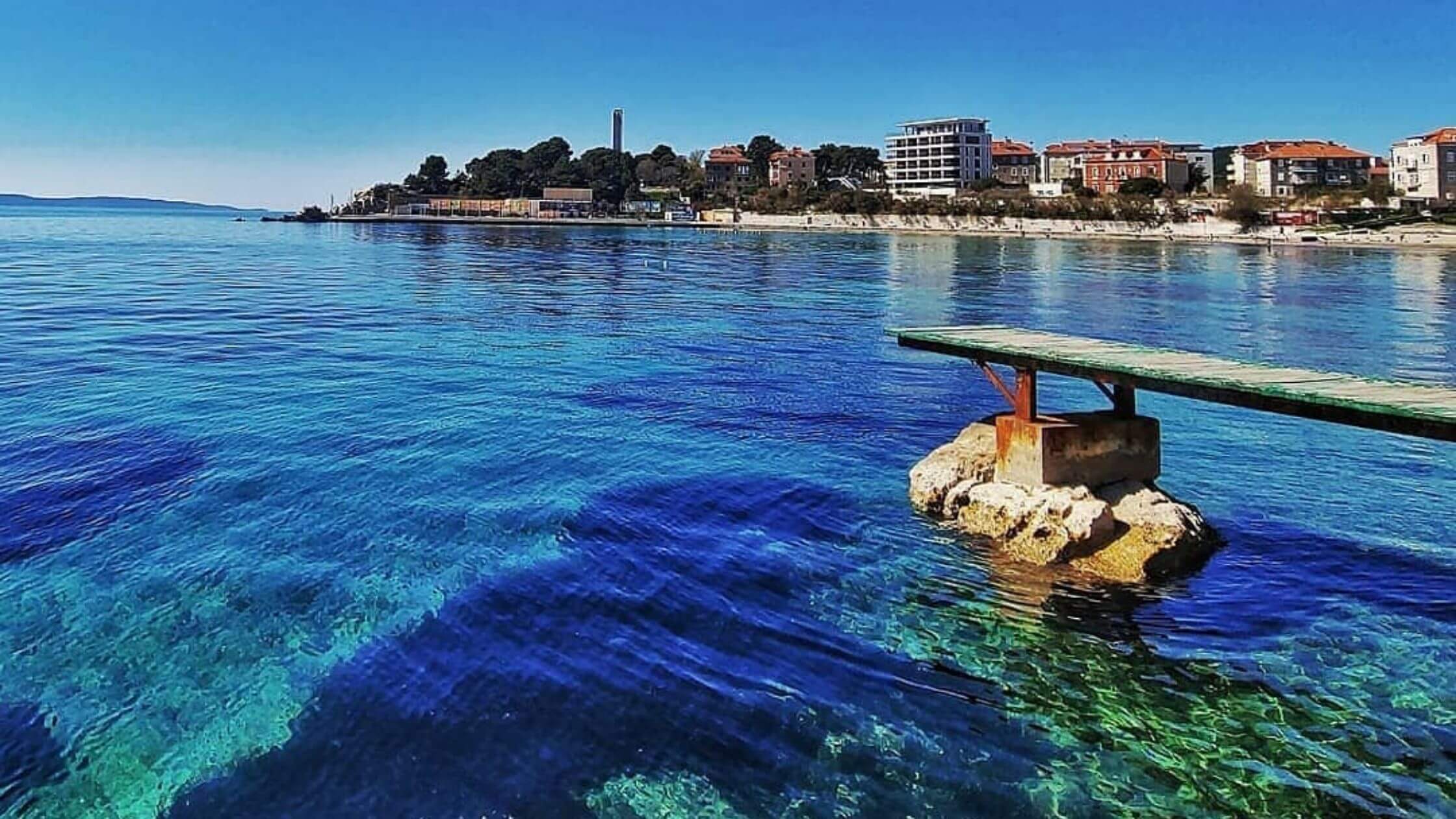
The crystal clear waters of Bačvice beach. Visit Split/Facebook
Fancy another beach day? Bačvice beach is a popular hangout spot in the center of Split. Relax at one of the many cafe bars and watch the locals play picigin, a traditional ball game. Rumor has it this beach is also where the sport originates from.
Day 7: Krka/Omiš/Trogir
Don't be too quick to leave Split. From here, there are several options for day tours to surrounding attractions.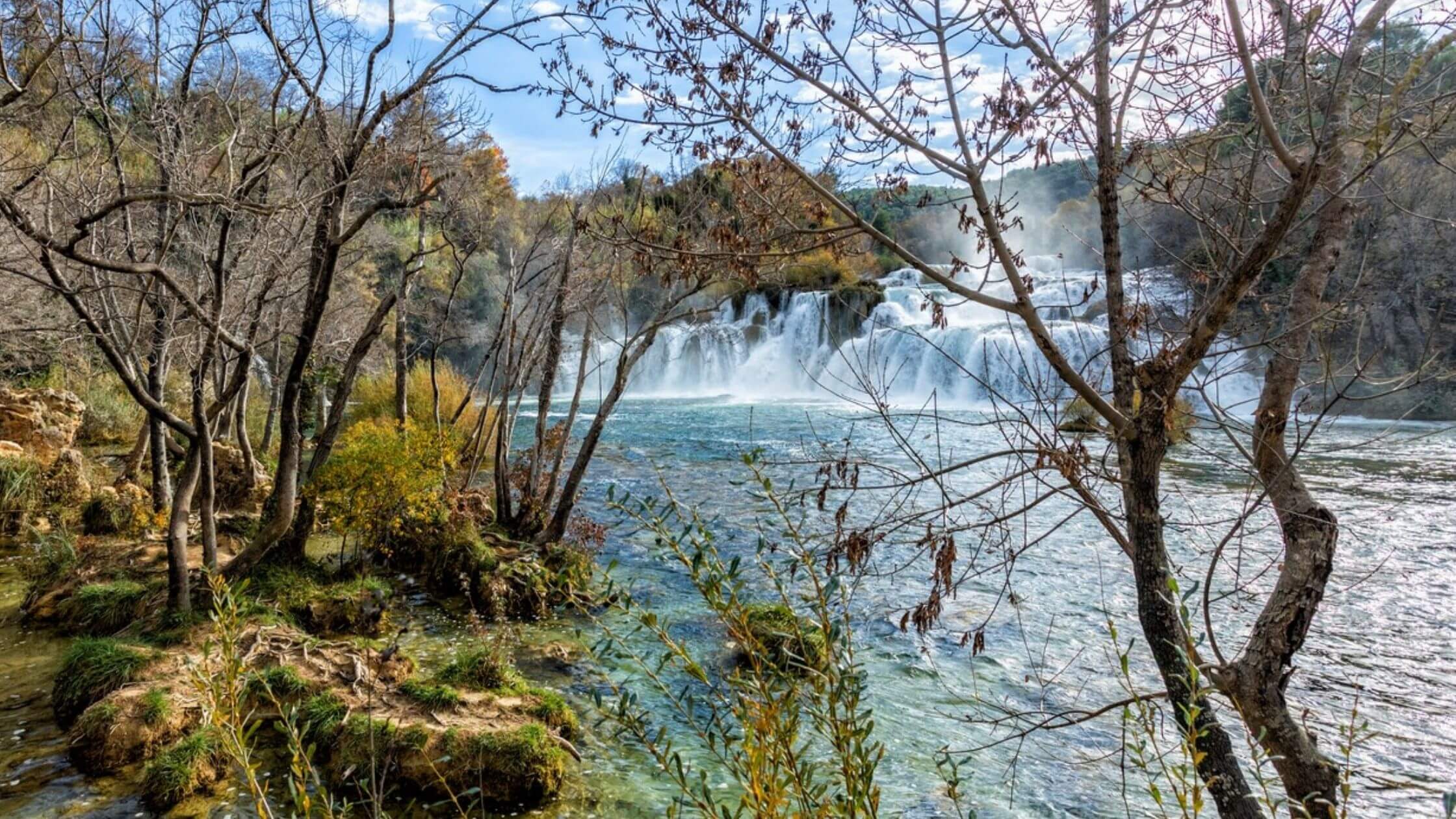
Some of the most stunning waterfalls in Croatia can be found at Krka National Park. Krka Nationa Park/Facebook
For nature lovers, Krka National Park is another national park about an hour’s drive from Split. Spend a day walking along well-maintained trails that wind along some of the most stunning waterfalls in the country. Again, make sure you get there early to avoid the crowds!

Try white water rafting in Omiš. Tourist Board Omiš/Facebook
For those craving more action, head to the picturesque town of Omiš which offers one of the most dramatic scenes on the coast. The city is nestled in a canyon surrounded by gray, craggy mountains, contrasting the peacock blue waters where the Cetina River meets the Adriatic Sea. Omiš offers white water rafting, free climbing, ziplining, abseiling, and canyoning, amongst other activities for visitors seeking a bit of a thrill on their vacation.

Just one of the many well-preserved remains scattered around Trogir's Old Town. Visit Trogir/Facebook
For the history buff, head to Trogir which has the best-preserved Romanesque-Gothic complex in all of Central Europe. Take a walk around the Old Town, surrounded by walls comprising a series of dwellings and palaces from the Romanesque, Gothic, Renaissance, and Baroque periods.
Day 8: Hvar
With over 1,000 islands, it wouldn’t be a complete trip to Croatia without doing some island hopping. From Split, take the 1-hour ferry ride over to Hvar. Its beauty and vibrant nightlife have made it a regular vacation spot for the likes of celebrities such as George Clooney and Beyonce.
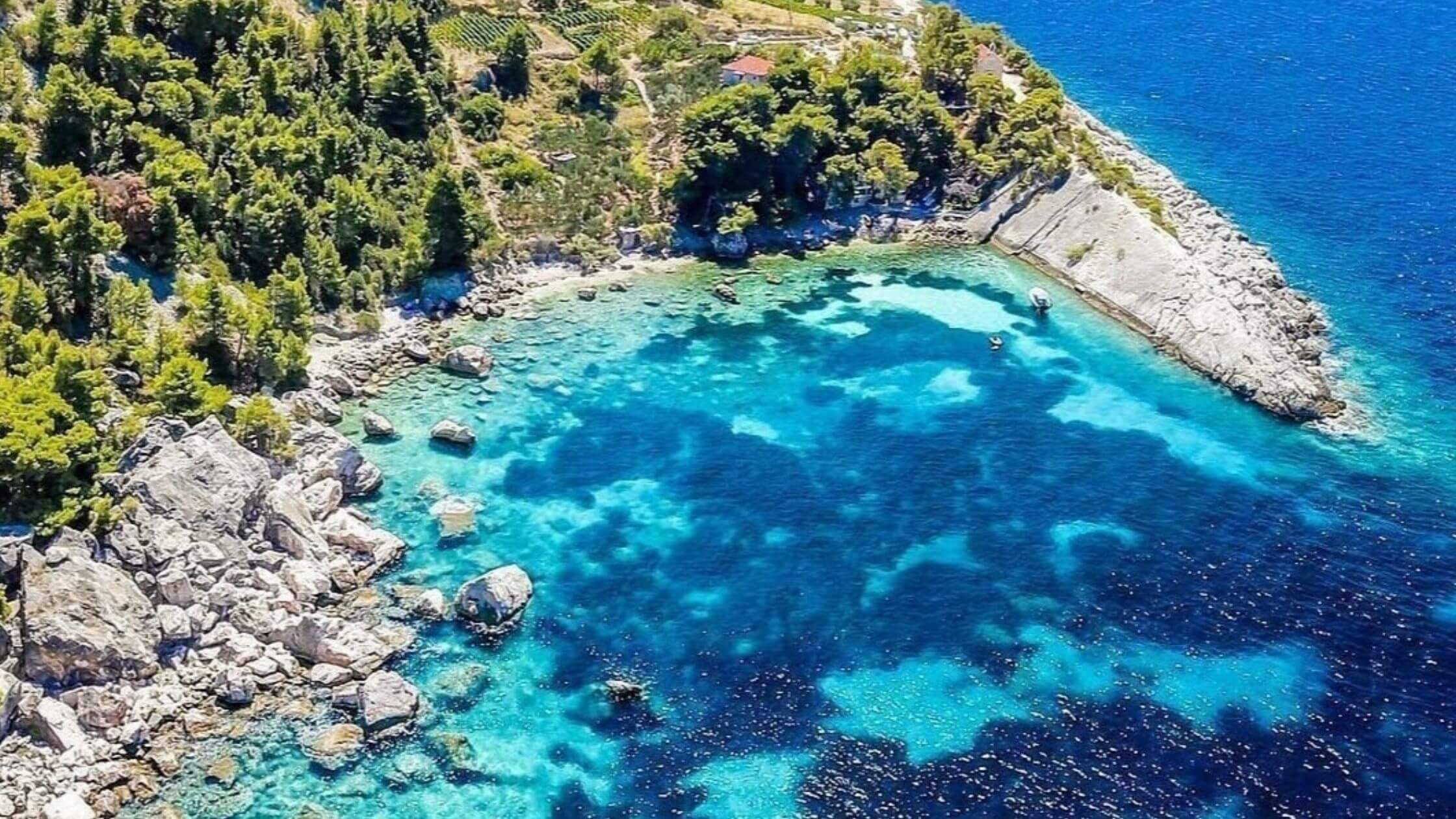
Hvar is one of the longest and sunniest islands in Croatia. Hvar Tourist Board/Facebook
Start by wandering around St. Stephen’s Square, the largest square in Croatia and don’t miss the Cathedral of St. Stephen and the Hvar public theater. For the best view, climb to the top of the Španjola Fortress to get an unobstructed view overlooking Hvar Town and nearby Pakleni Islands. You can even rent a small boat (no license required) to explore these islands on your own!
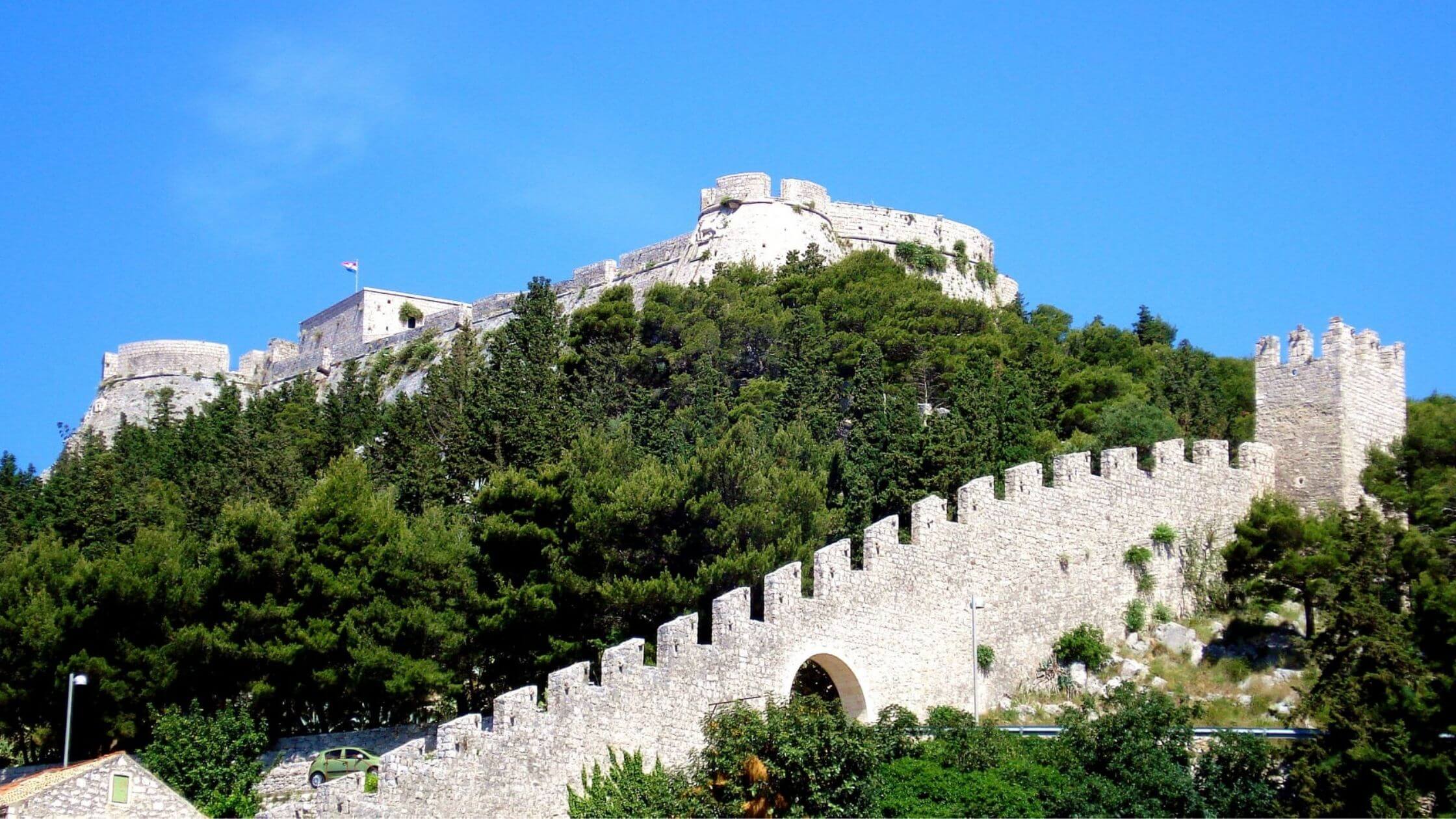
The view from the top of the Španjola Fortress is unparalleled on the island. Hvar Tourist Board/Facebook
Once you’ve taken in all these sights, enjoy another relaxing beach day at one of the many pristine beaches such as Malo Zaraće, Dubovica, or Pokonji Dol.
Alternatively, if you’re looking for another day trip, book a tour with one of the local travel agencies to the Blue Caves on Biševo and marvel at its clear, iridescent blue waters.
Day 9: Korčula
After the buzz of Hvar, take the ferry to the tranquil town of Vela Luka on the island of Korčula, the birthplace of famed explorer Marco Polo and home to some of the best Croatian wines.
From Vela Luka, take a scenic drive towards the town of Korčula, also known as “little Dubrovnik”. Along the way, stop by the numerous family-run vineyards that welcome visitors for wine and cheese tastings.
Grk is a white wine variety grown almost exclusively on Korčula, other white wines such as Pošip and Rukatac are also premier Croatian wines, often served on celebratory occasions. For fans of red wine, do grab a bottle or 2 of Plavac Mali.
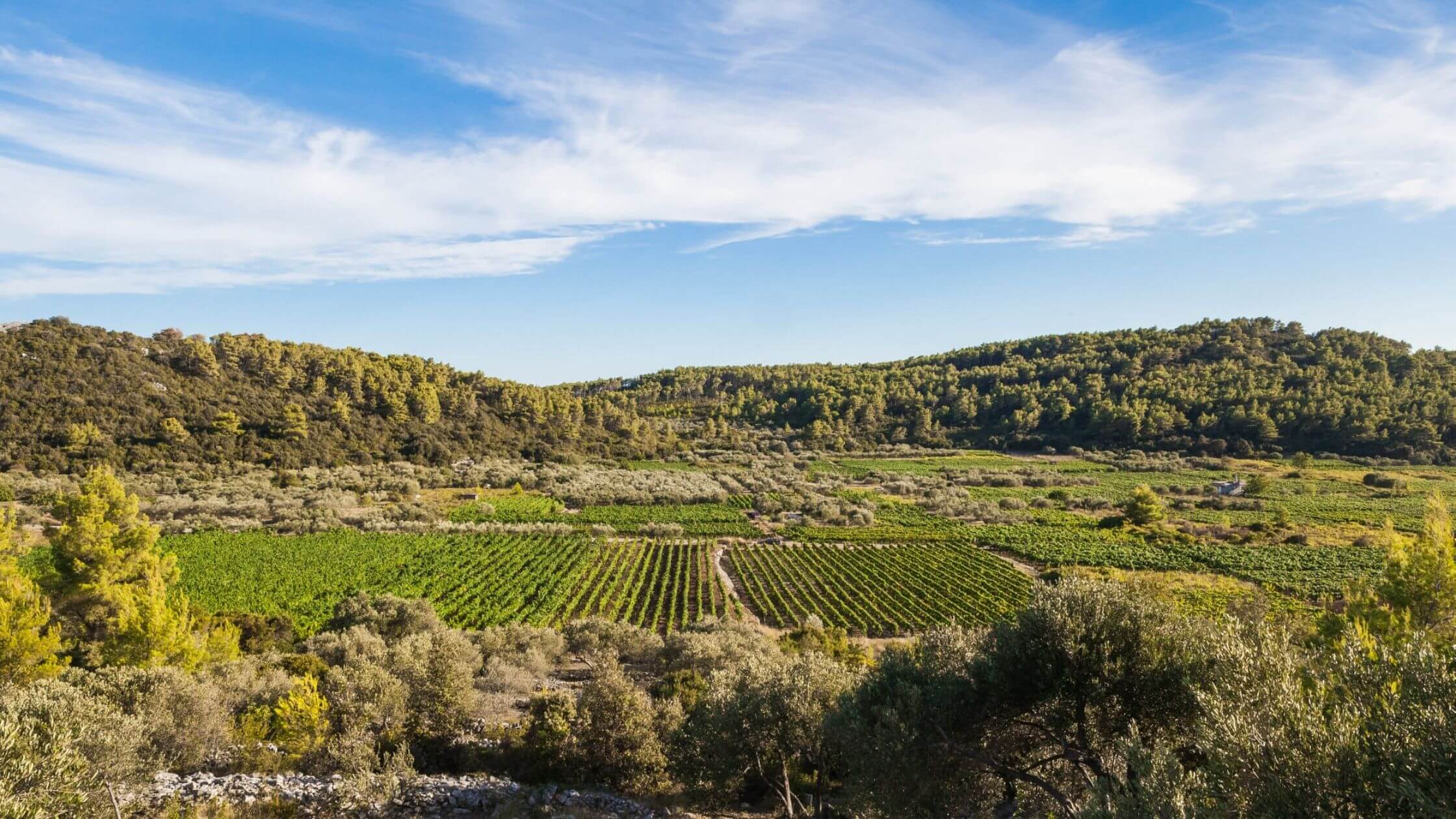
Vineyards of Korčula island. Visit Korčula/Facebook
In Korčula, walk off the afternoon’s indulgences exploring the streets of the Old Town with its architectural influences by the Venetian Renaissance, before capping off the night with a meal and more wine at any of its superb restaurants.
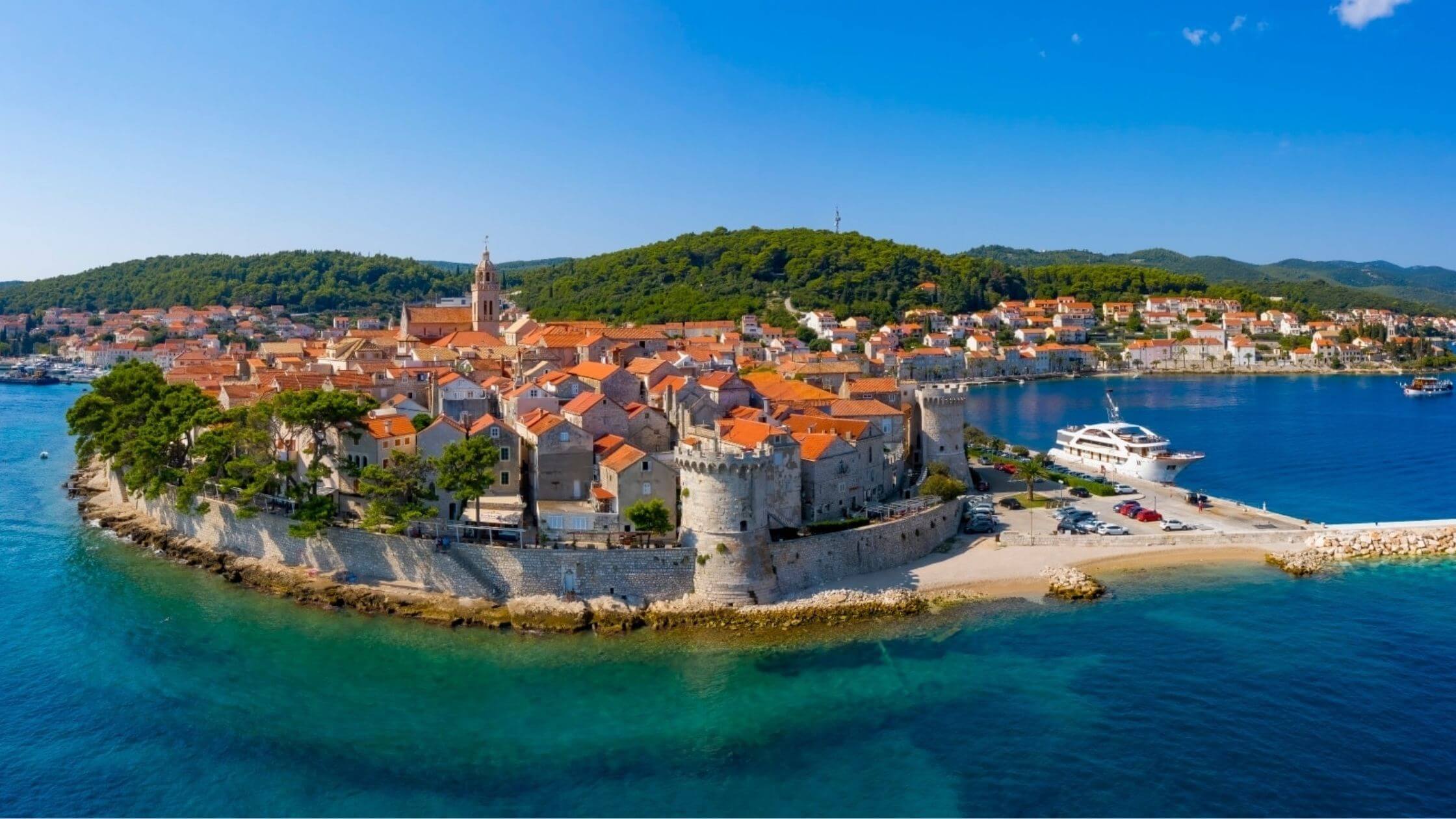
Korčula town. Visit Korčula/Facebook
Day 10: Dubrovnik
There’s no better way to end the trip than with Dubrovnik. And yes, there is no shortage of Game of Thrones tours to indulge your senses, but there is so much more to this medieval city than where Cersei Lannister did her walk of shame.
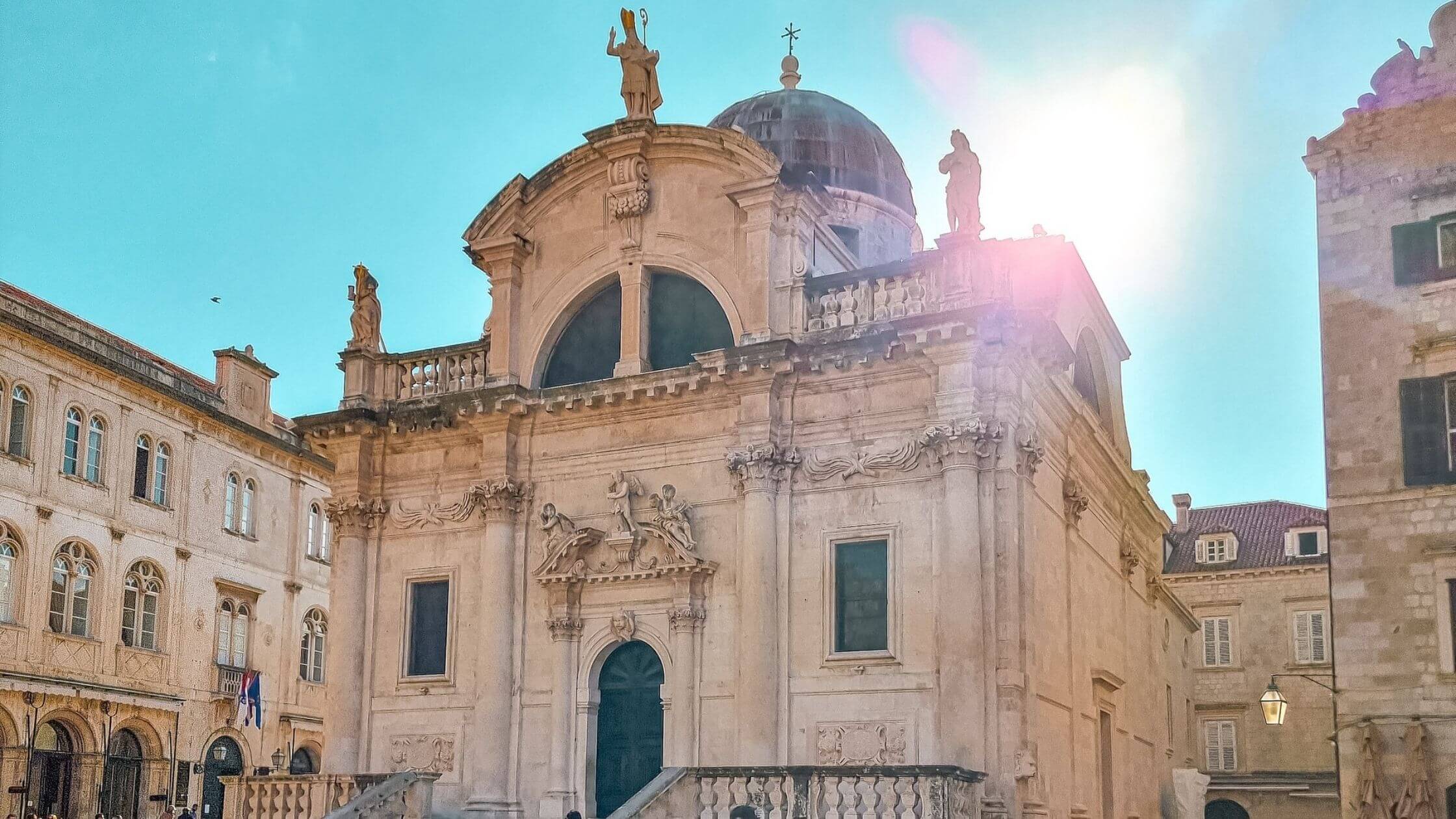
The beautiful Saint Blaise's Church in Dubrovnik was built during the 10th century. Dubrovnik Tourist Board/Facebook
Talk a walk along the city walls and through Stradun, Dubrovnik’s main street. From here, you can also catch Onofrio’s Large Fountain that used to supply Dubrovnik with fresh water during the Middle Ages and other impressive structures including the Clock Tower, Saint Blaise's Church, Saint Ignatius Church, Cathedral of the Assumption, and the Franciscan Monastery.
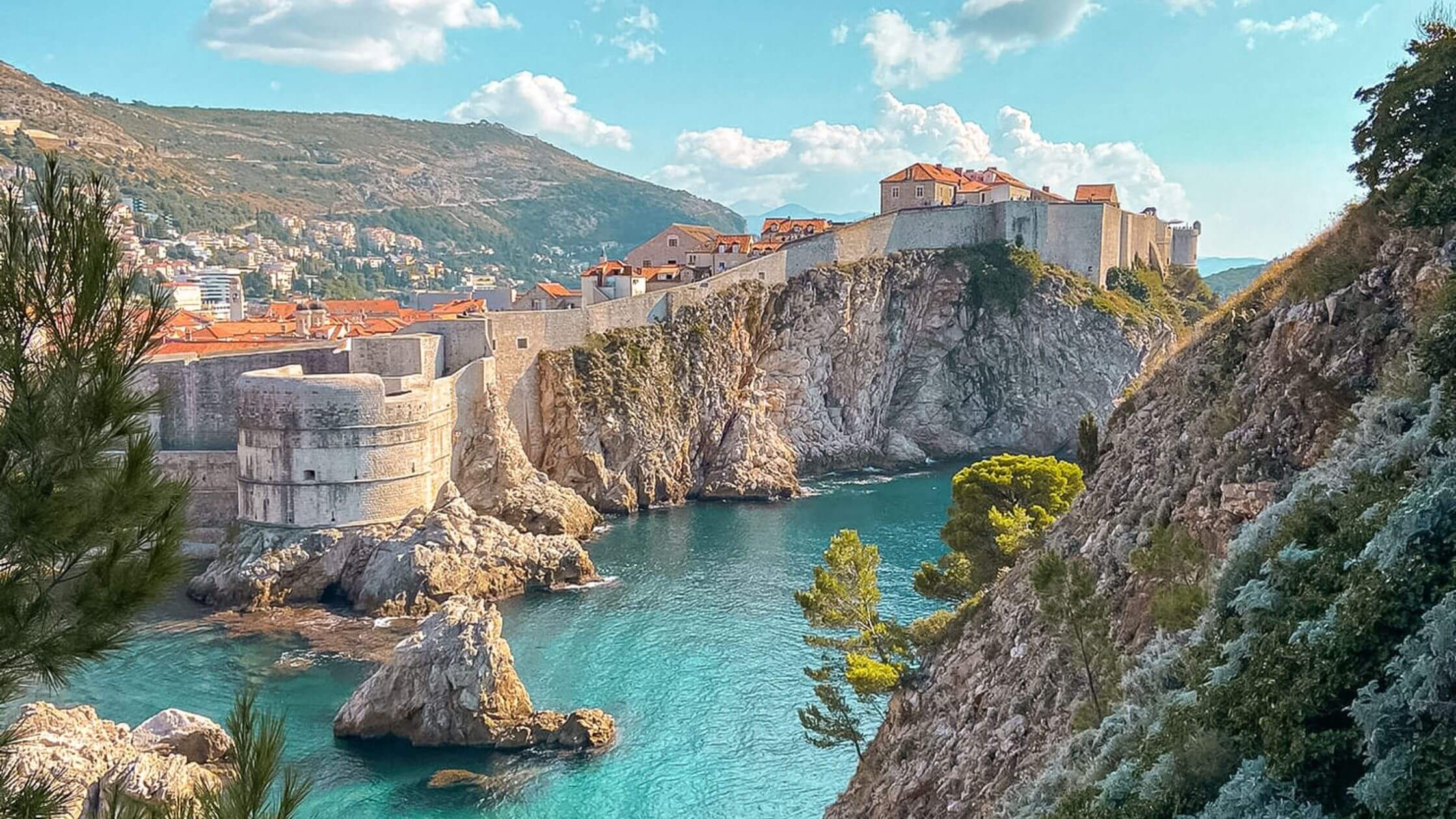
The view from beyond the walls of Dubrovnik looking upon Fort Lovrijenac. Dubrovnik Tourist Board/Facebook
Watch the sunsets and reminisce on your amazing road trip through the country at one of the cliff bars along the city walls, before capping it all off with an exquisite meal at one of the many Michelin-starred or recommended restaurants Dubrovnik has to offer.

Nothing like a luscious meal to top off a fantastic experience road-tripping in Croatia. Dubrovnik Tourist Board/Facebook
And that’s all folks, you’ve done it! Croatia in 10 days! Bear in mind, this is merely the appetizer of what Croatia has to offer. Customize this guide to better suit your tastes and pace and remember, don’t hesitate to ask the locals in order to unlock the best secrets each location has to offer.
For more on travel in Croatia, follow TCN's dedicated page.


